Sailing on the Stahlratte, Part 1: Getting On Board
— Sailing, Stahlratte — 6 min read
May 9 - 10, 2010
Journeying overland from North to South America presents all travelers with the question of how to cross the Darien Gap, a 150 kms (95 mile) stretch of dense jungle that has seen no development due to its harsh environment of swamps and rivers. It's for the better to preserve some raw nature in today's high-paced world. The Pan-American highway ends in Yaviza, Panama and picks up past the jungle in Colombia. The quick option is to fly over from Panama to Bogota or Quito, but it's also the expensive option. The more fun option is to put the bike on a sailboat and cross over to Cartagena, Colombia, across the Caribbean Sea.
There have been quite a few riders who've taken the sailboat option and had a bad experience as the captain was either inexperienced or didn't deliver as promised. With that in mind, I wanted to make sure to sail with the most reliable captain and boat in these waters: Ludwig on the Stahlratte, a 40 meter (130 ft) steel-hulled sail ship, built in 1903 and still going strong. I contacted Ludwig before I began my trip and planned the Central America portion of the ride in order to get to the boat on time. May 10 was the last sailing date before the Stahlratte was going into maintenance for about two months in Cartagena, and as I got delayed leaving the US, this was the earliest I could make it down here. When Ludwig informed me that the trip was booked completely by a group, I asked if there was someway I could still come aboard as part of the crew and work my way across, not requiring much comforts, as I was mainly looking to just get across to Colombia. He happily agreed and said he could use the extra help and I would only need to pay USD 360 to transport the motorcycle over. I was feeling good about this and excited to be part of the crew of a sailing ship, that too on my first voyage across open waters.
Ludwig, along with all the other captains, offers a four day sailing trip where the first two days are spent exploring the beautiful San Blas Archipelago and then sailing across open waters to Cartagena in about 30 hours. I came on board a day early to meet the crew and get familiar with my duties.
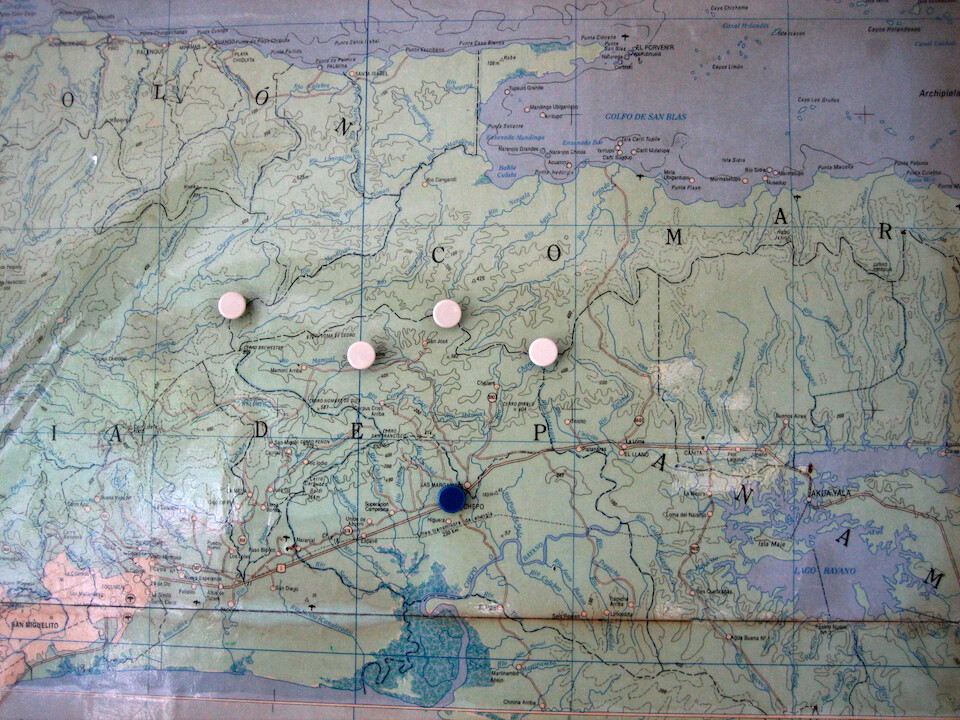
The Stahlratte was anchored near Carti on the Caribbean side of Panama (upper-right on map) and from Chepo (blue marker), I had to take the Llano-Carti road across the divide (black line along the white makers). The road is to the right of the right-most white marker.
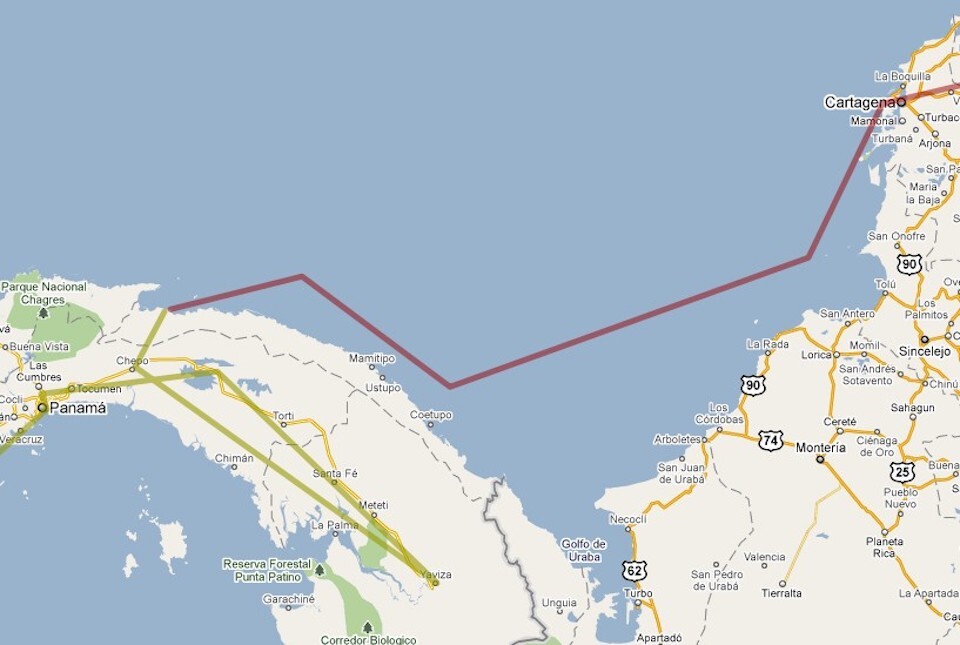
The route of the voyage from Carti, Panama to Cartagena, Colombia. Click on it to go to the interactive version in Google Maps.
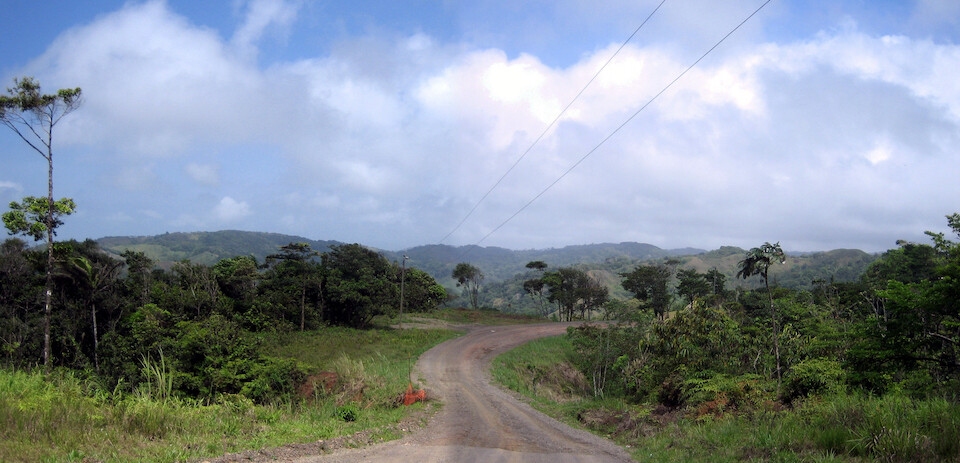
It was a beautiful ride as the road crossed the continental divide.
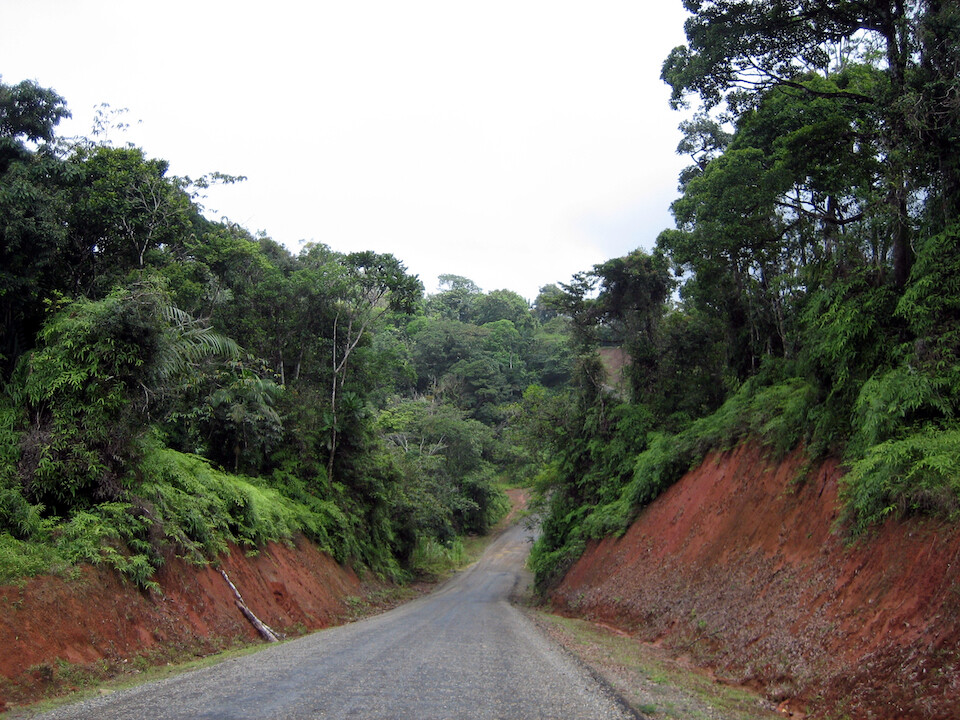
The road was mostly paved, but had gravel spots in the troughs. The route also steeply descended and ascended rapidly.
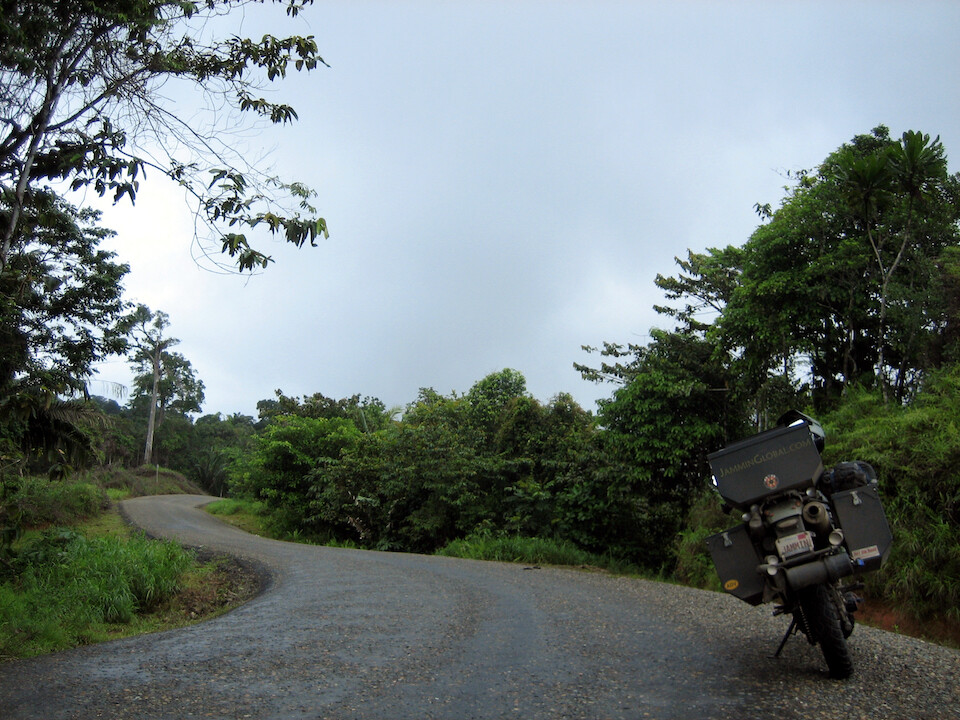
Entrance fee of USD 9 required by the Kuna Indians as this is a protected area.
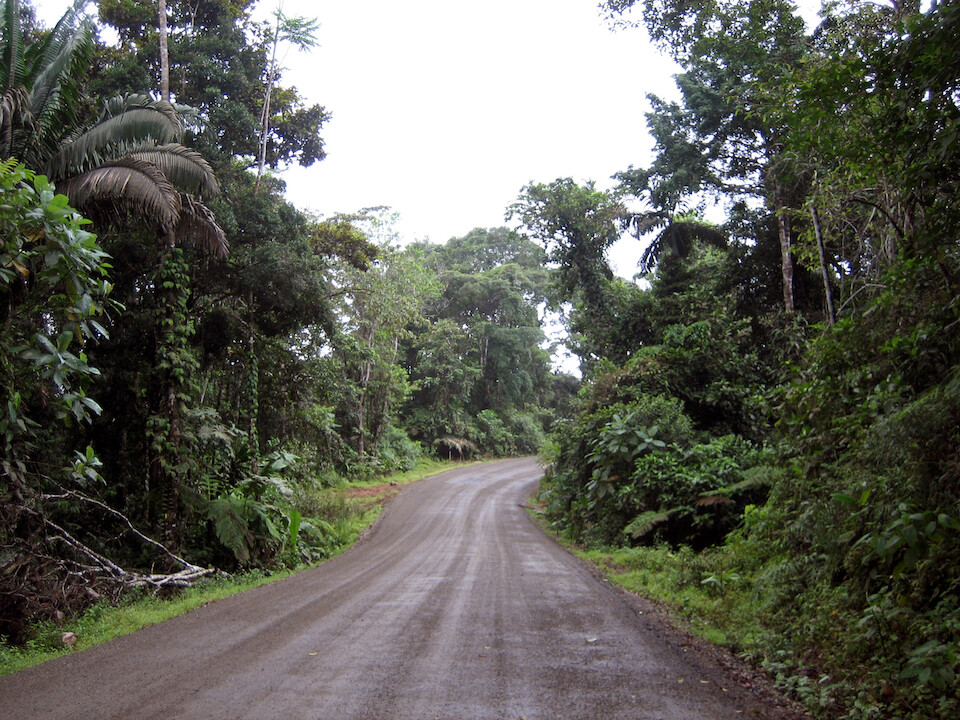
Riding through dense jungle with a bit of rain.
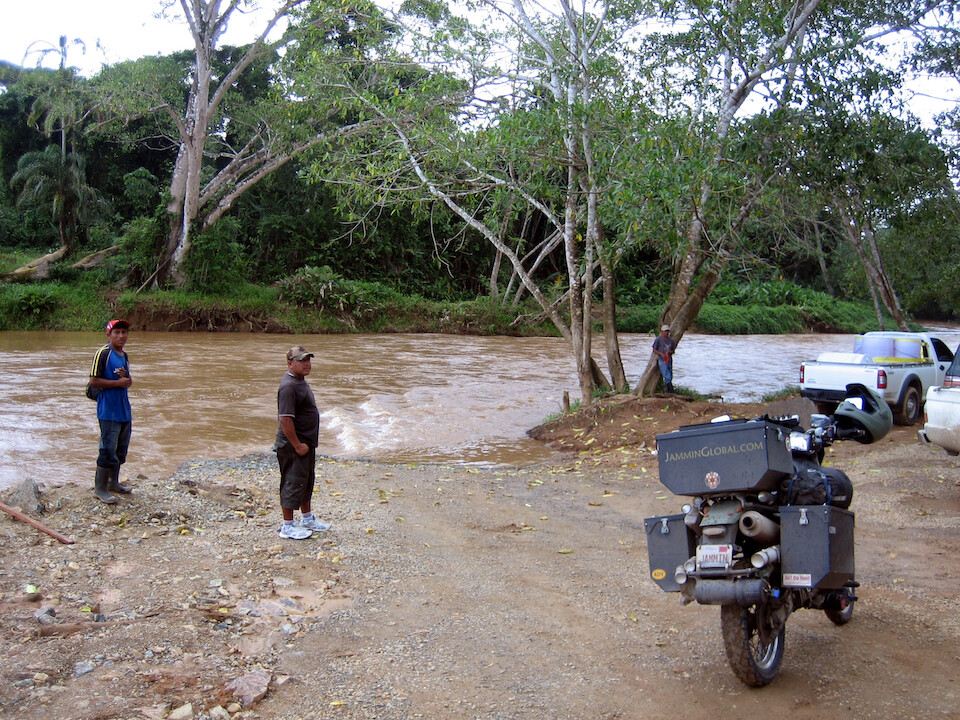
The fast-flowing Rio Carti Grande, which was about a meter deep. In the dry season it's easy to cross the river, but with the start of the rainy season, there was no way.
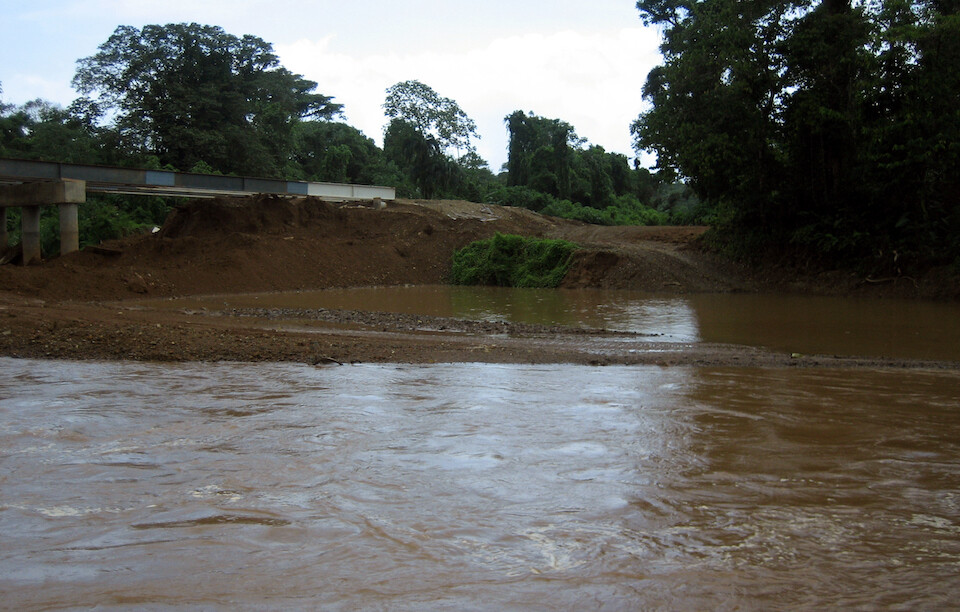
The road picking up on the other side. They're building a new bridge, which should be done in a year or so.
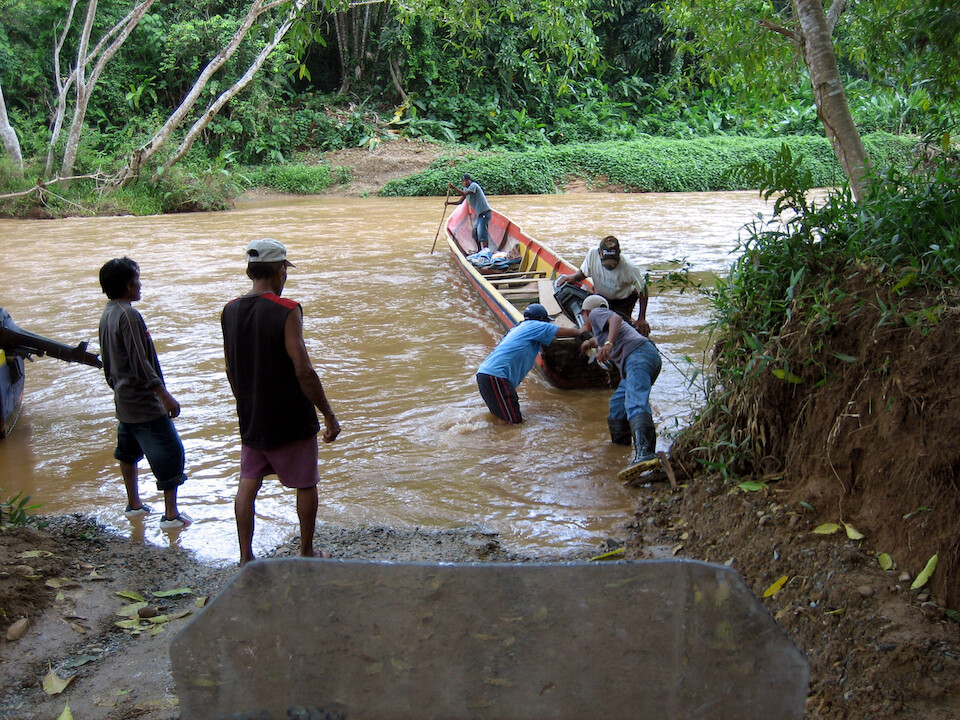
Ludwig arranged with the Kunas to have a canoe ready for me to take me to the Stahlratte.
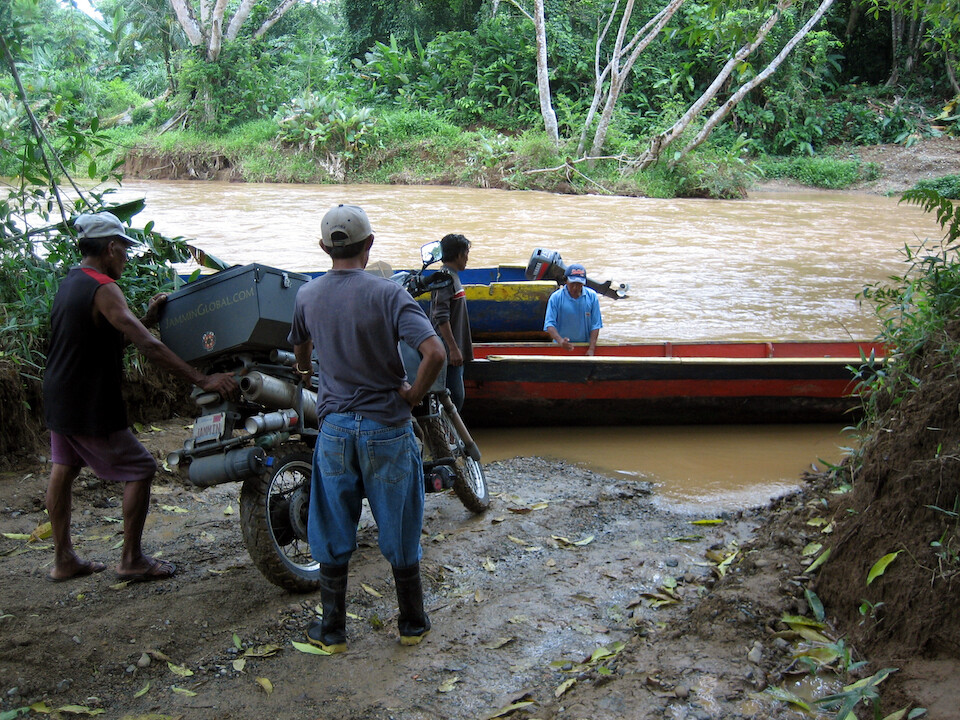
I felt like I've done my part in getting to the end of the road here on time and now things were happening to get me to Colombia.
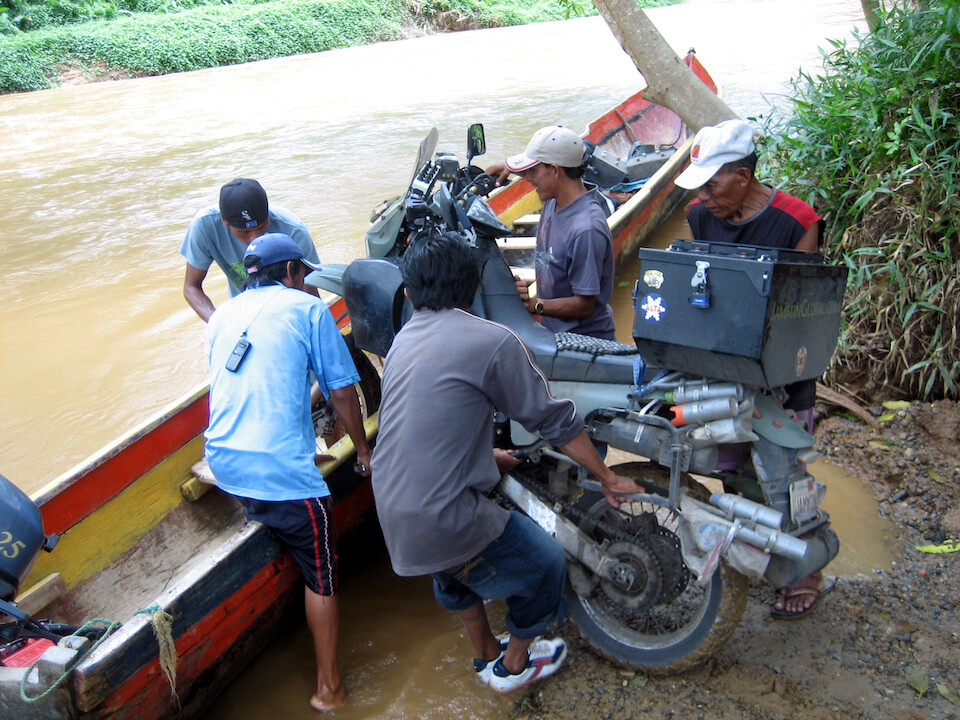
Heaving the front wheel into the canoe.
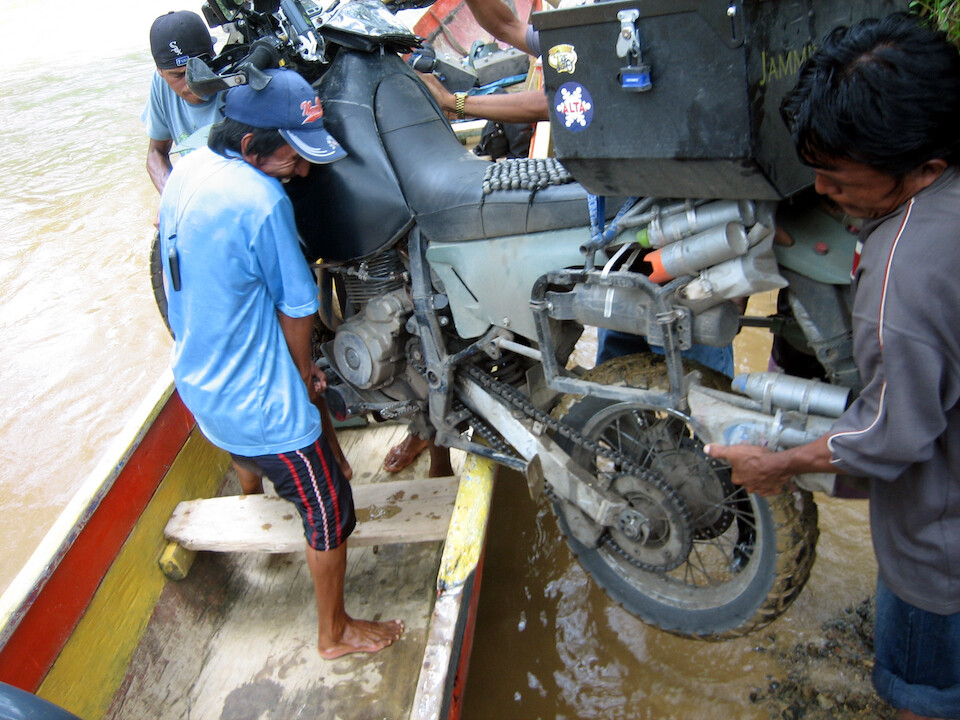
Balancing on the frame and turning her forward.
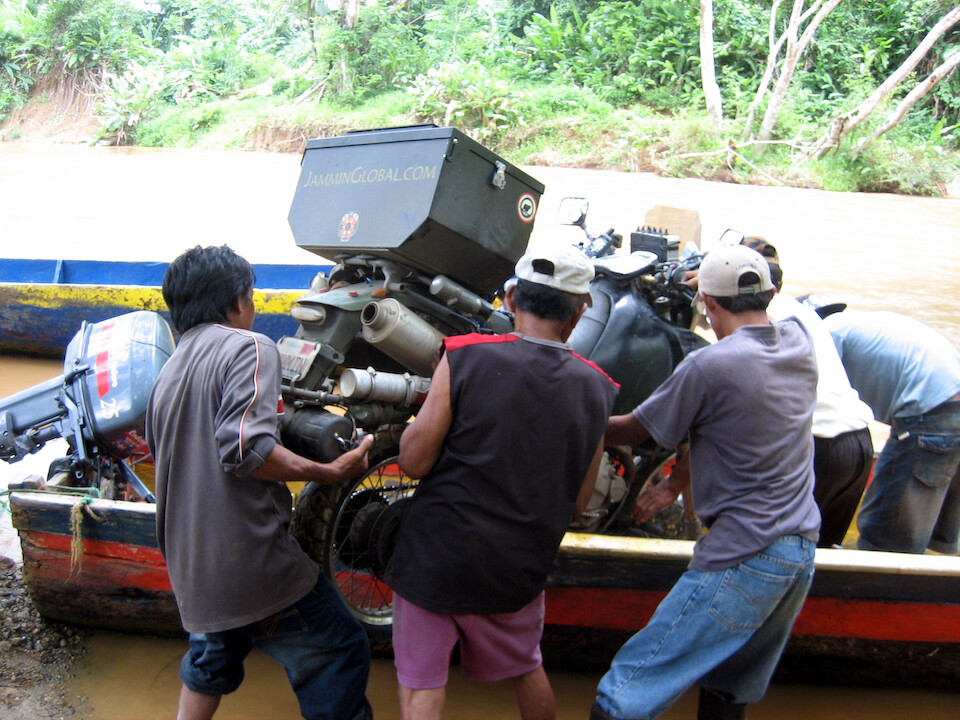
And lifting the rear of the bike into the canoe. The guy at the back was holding onto my rear tool tube and snapped a zip-tie, but besides that, it went quite smoothly.
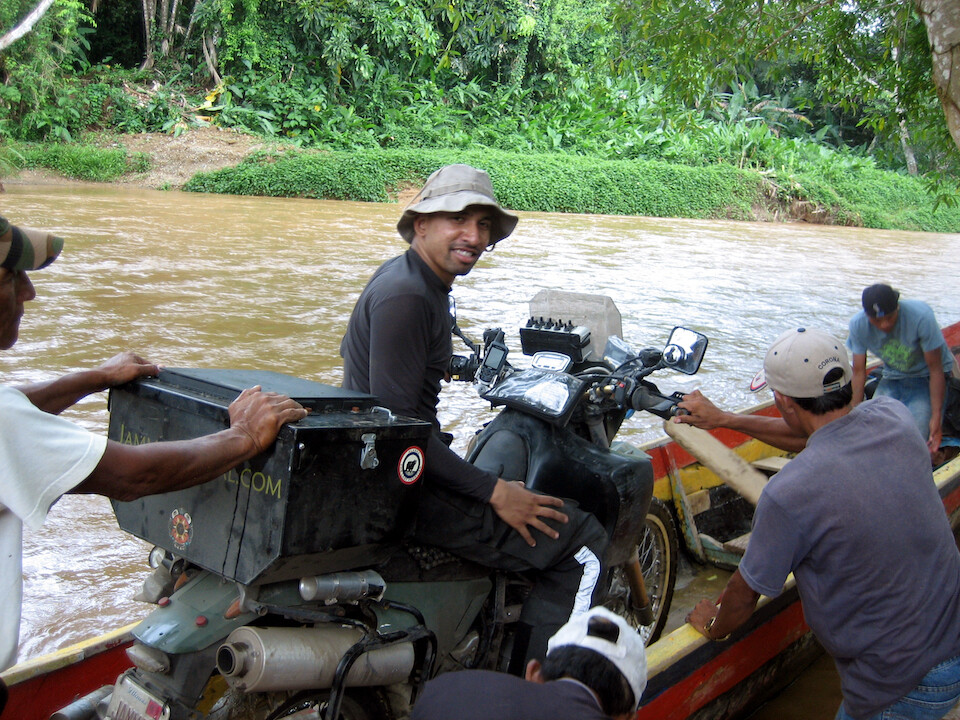
Aboard my first canoe with sanDRina.
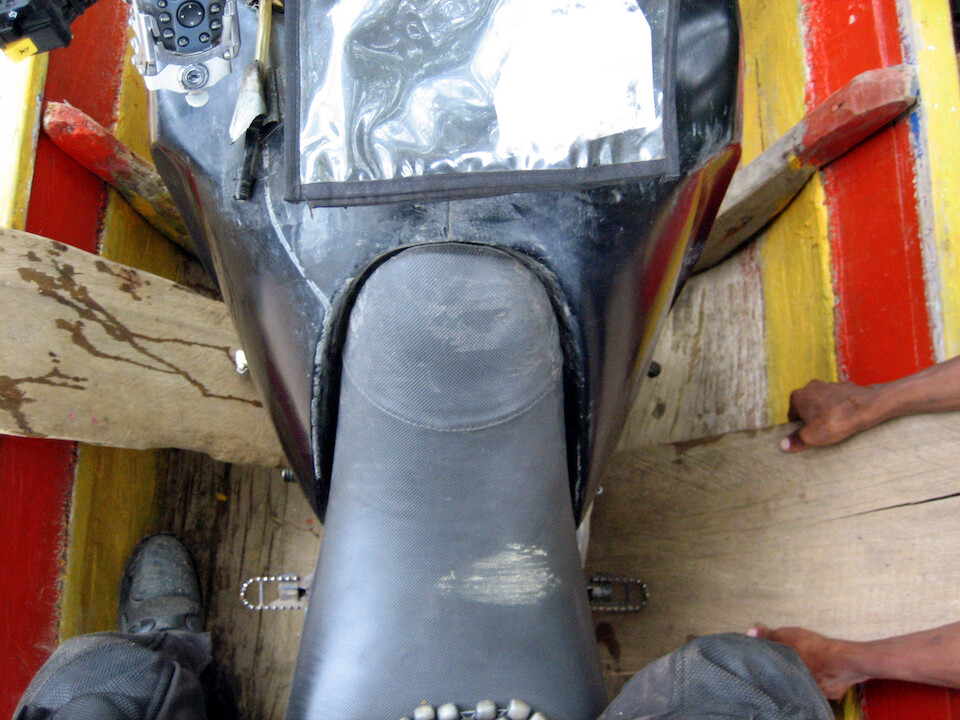
They used planks on either side to stabilize the bike but I remained sitting on her, just in case.
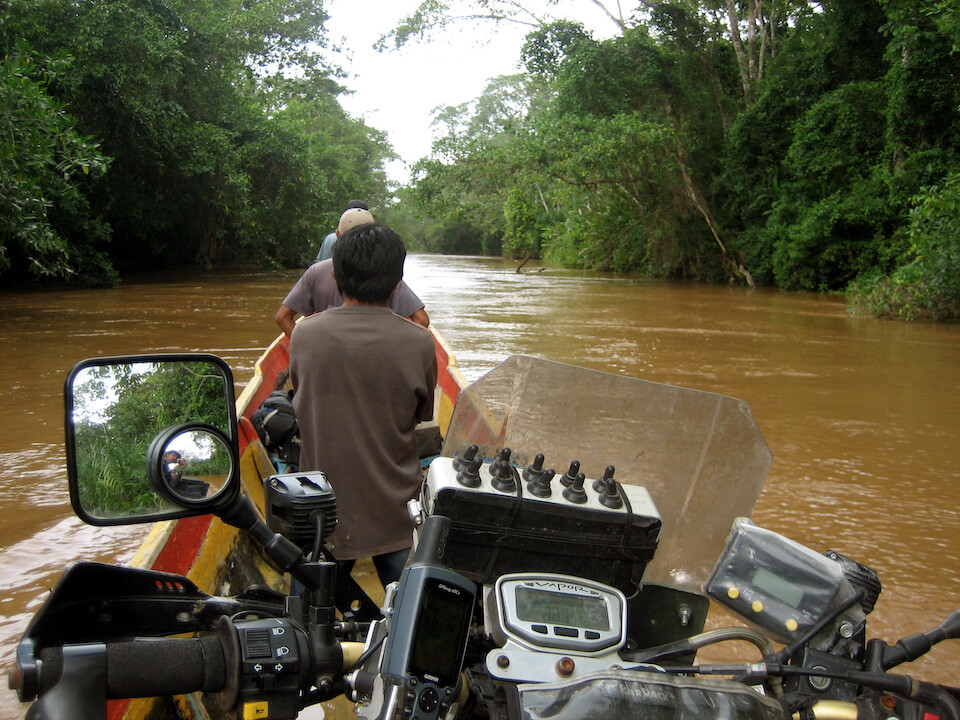
Heading out.
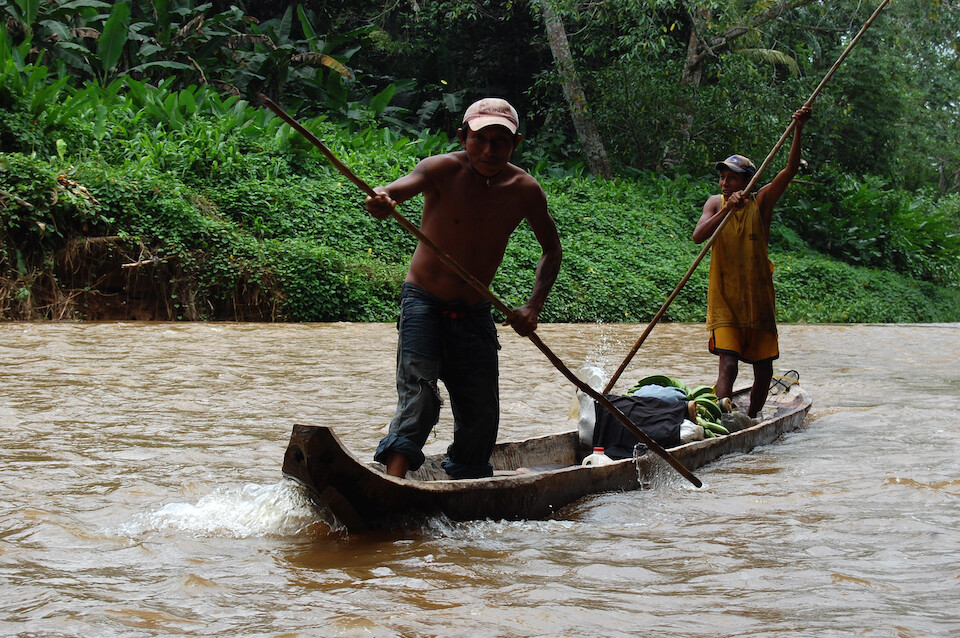
Kunas paddling upstream in a slim canoe.
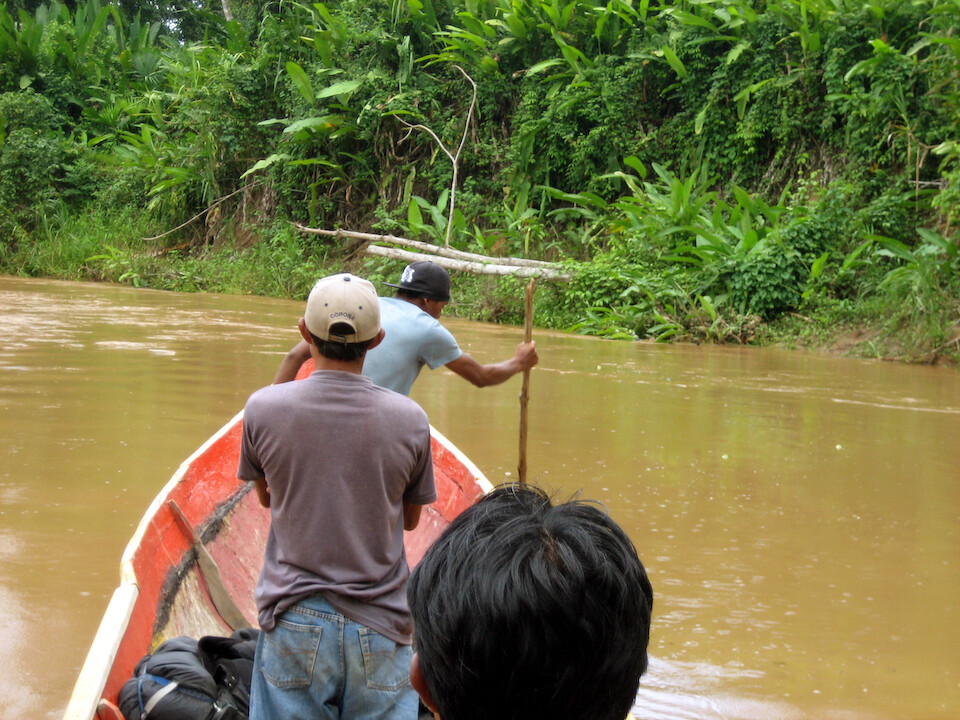
The lead boatsman checked the silt build along the way, from perhaps known sand bars.
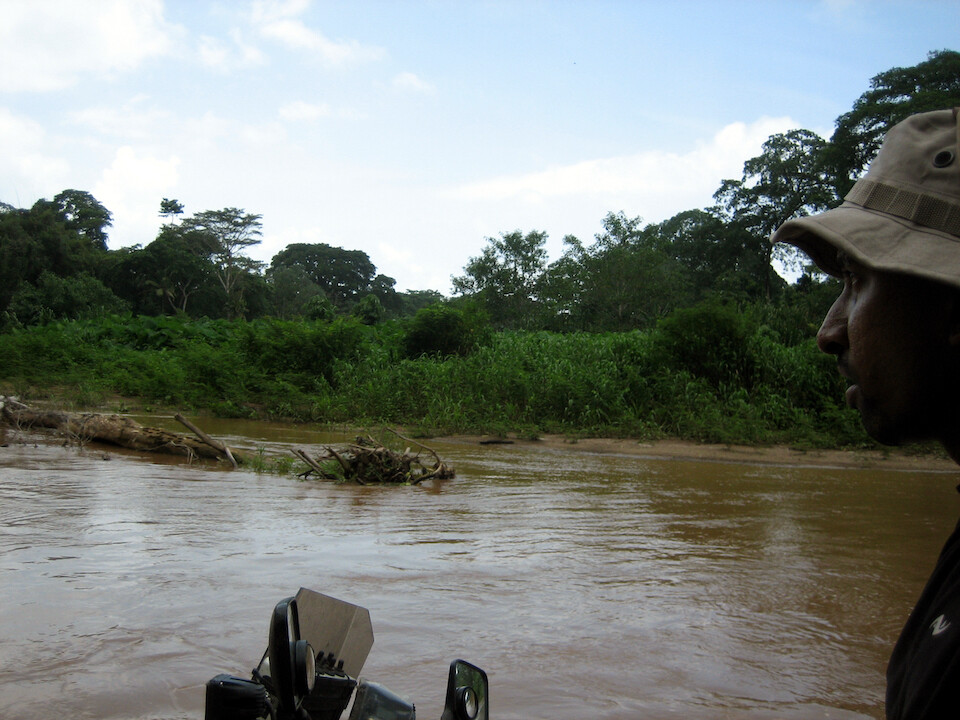
Cruising down the Rio Carti Grande.
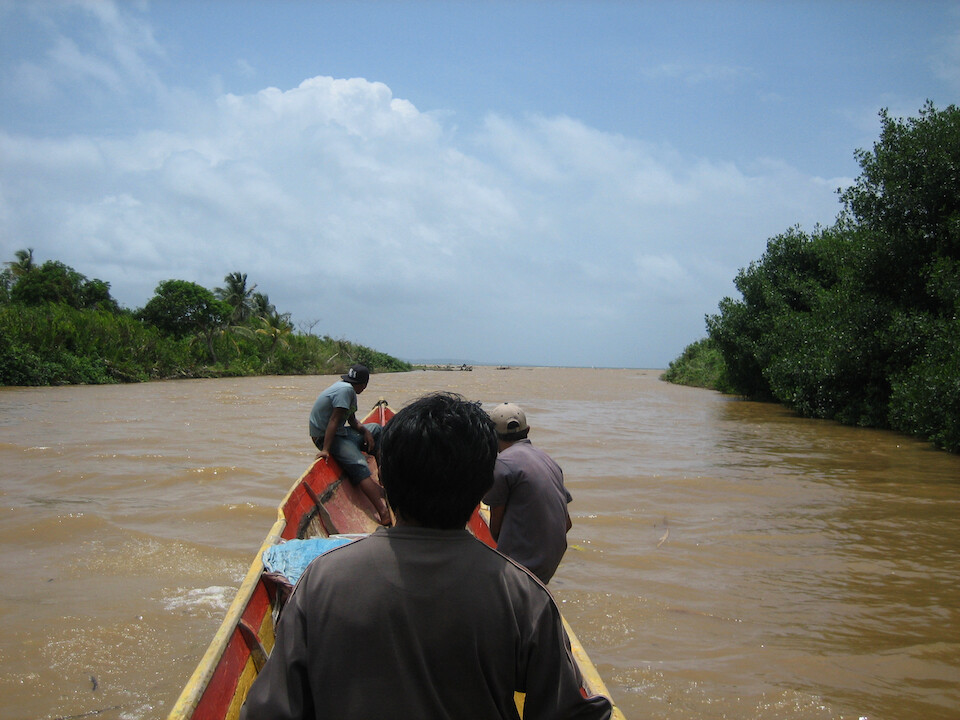
Heading out to the open sea.
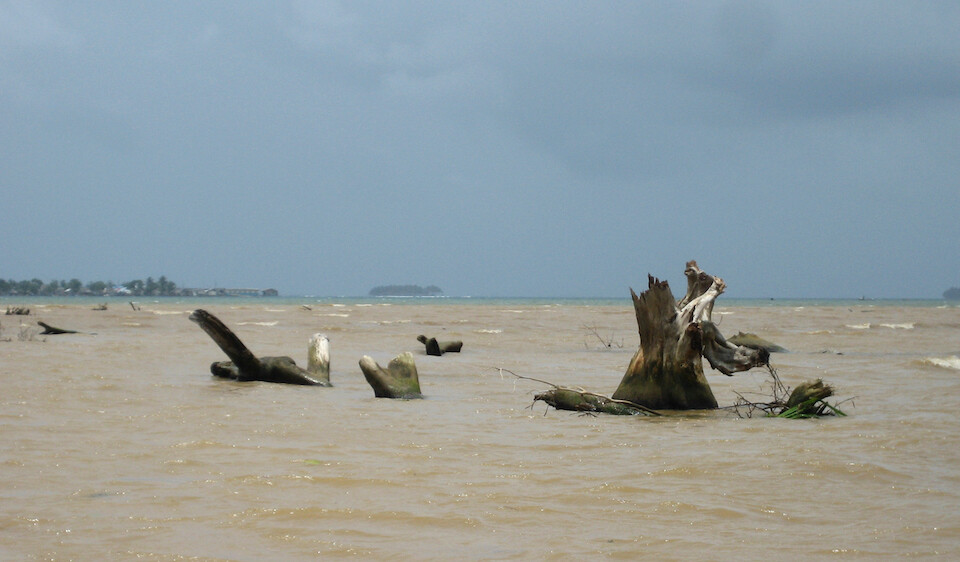
Huge pieces of driftwood at the mouth of the river.
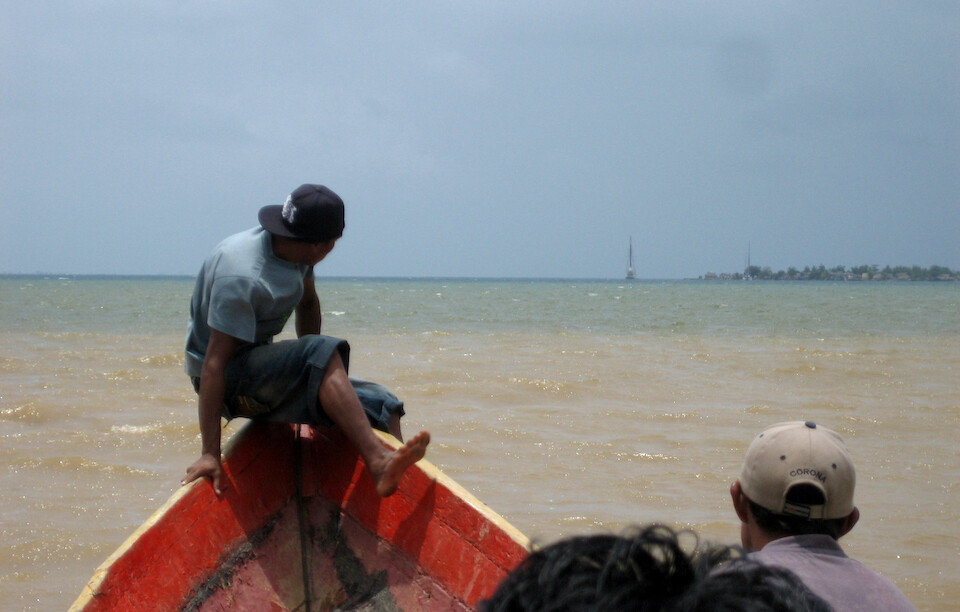
The brown, murky, sediment-filled color of the river slowly getting diluted by the blueness of the sea. The Stahlratte off in the distance.
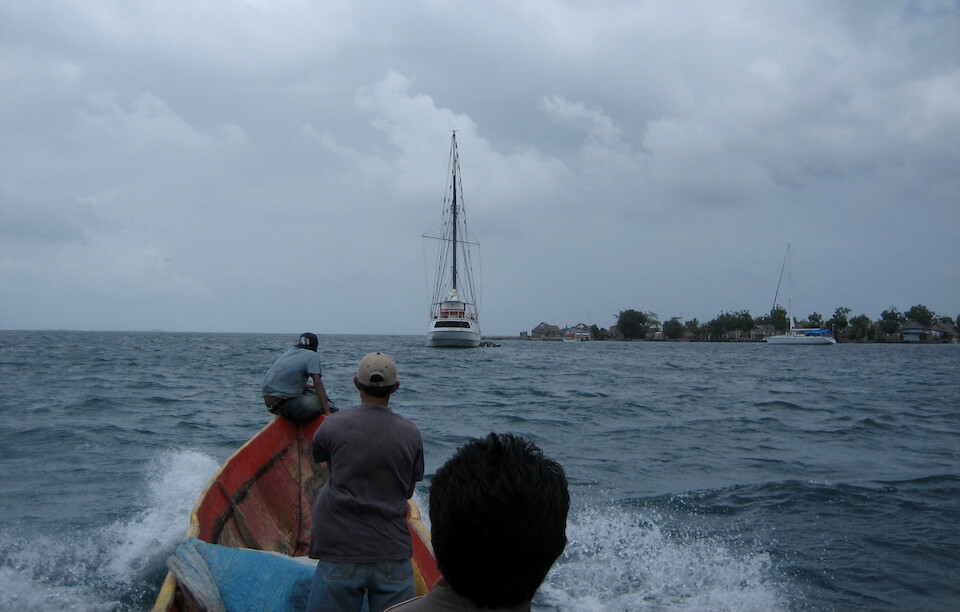
Coming up to the Stahlratte.
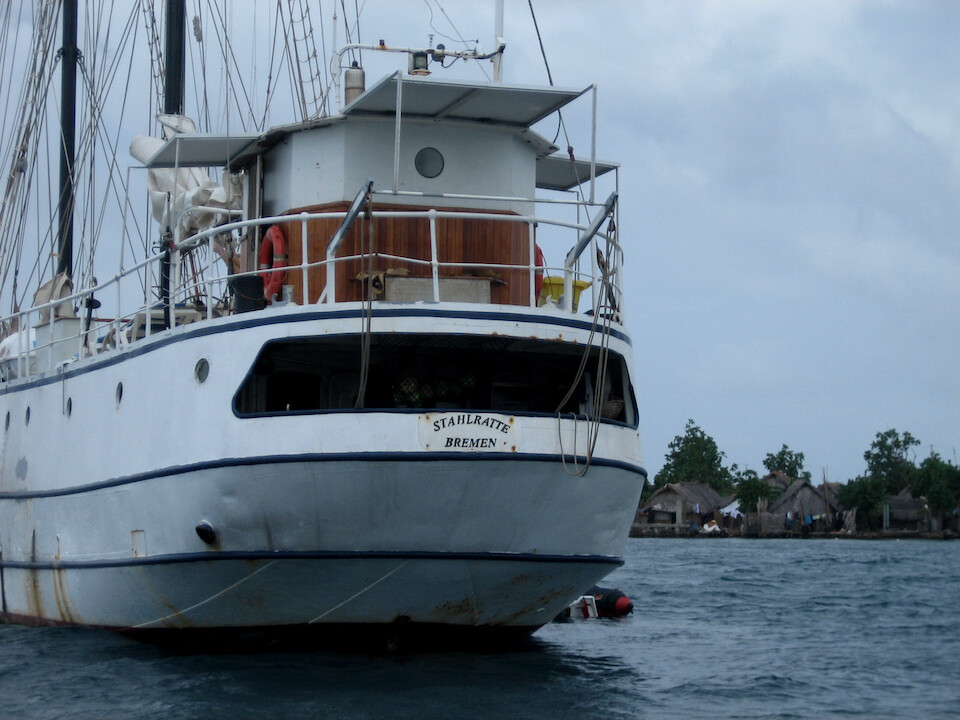
The Stahlratte, meaning "steel rat". A Bremen, Germany registered vessel. It was built in 1903 in The Netherlands and started life out as a fishing vessel. It was bought in 1984 by the Association of Advancement for Sailing Navigation in Germany and converted to the current twin mast schooner layout and is heading on a long term voyage around the world. Besides a hefty diesel engine, two generators, a seawater-desalination unit, she's also equipped with all the necessary safety equipment, including satellite communications.
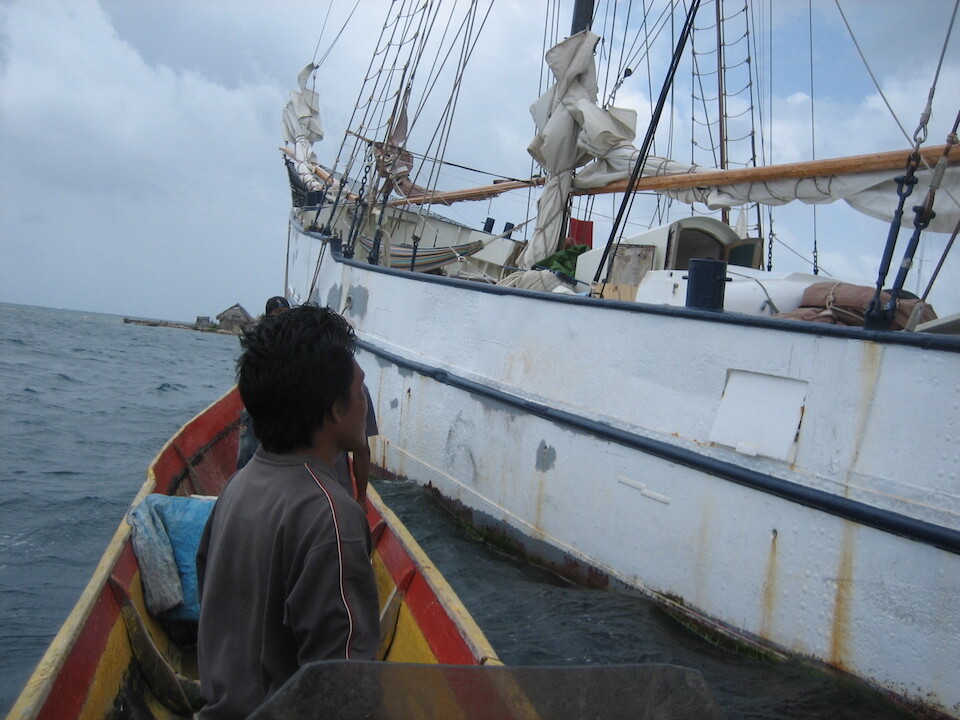
Pulling up alongside.
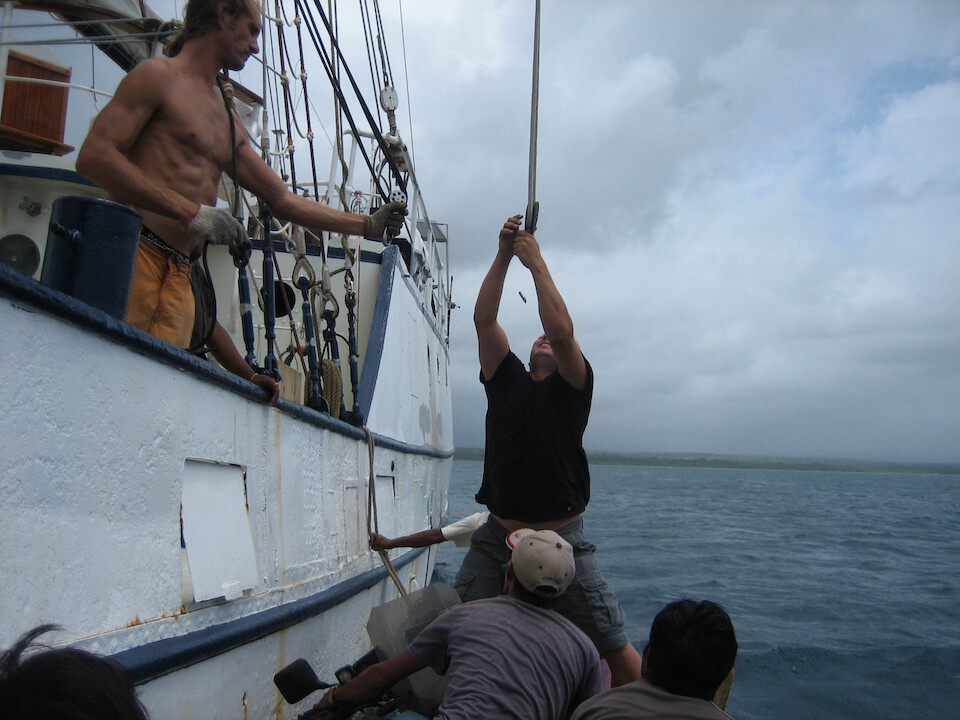
The Captain, Ludwig getting the ropes ready to lift sanDRina on board.
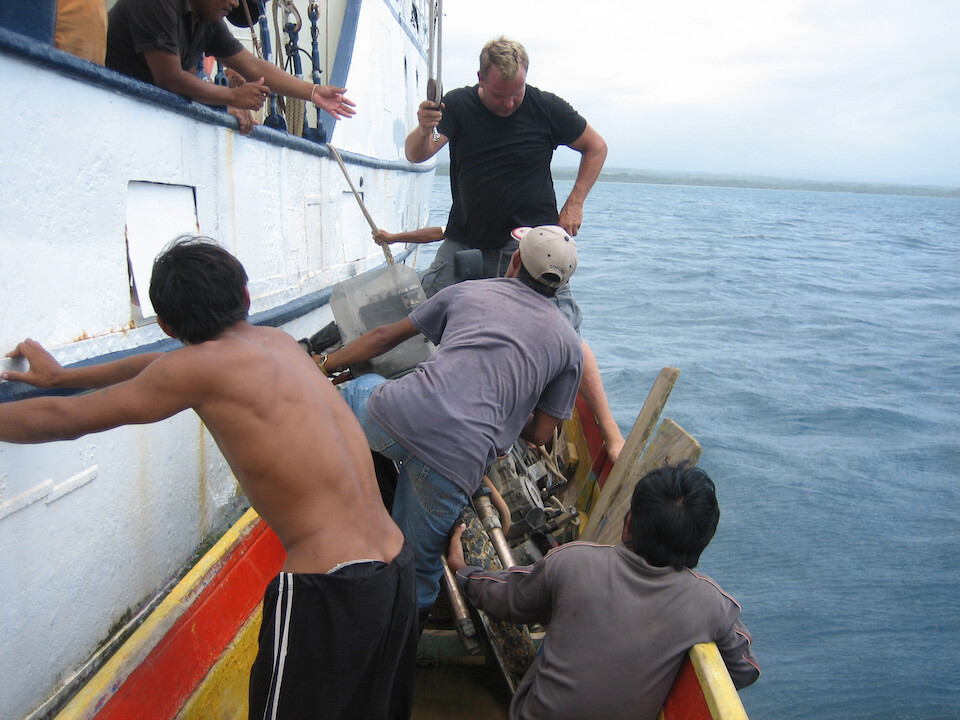
Yeah, just as we got close to the ship, the bike started leaning over with me still sitting on it and I feared we were going to fall in the water. Quick save by the Kunas.
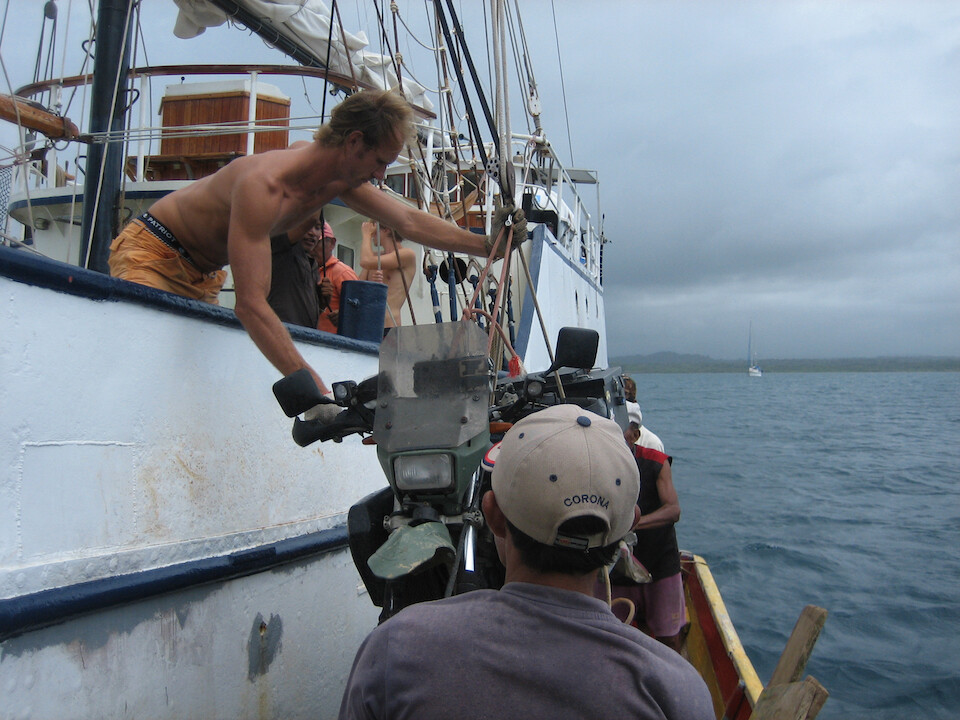
Ludwig's First Officer, Roland or Roli, stabilizing the bike as she was winched up.
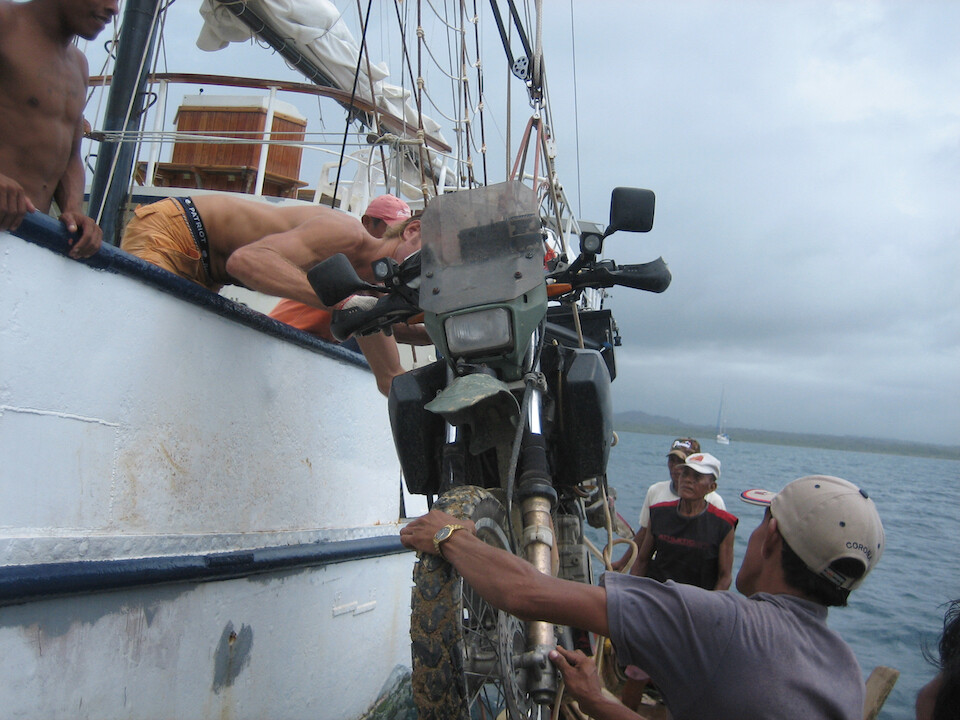
Easy does it.
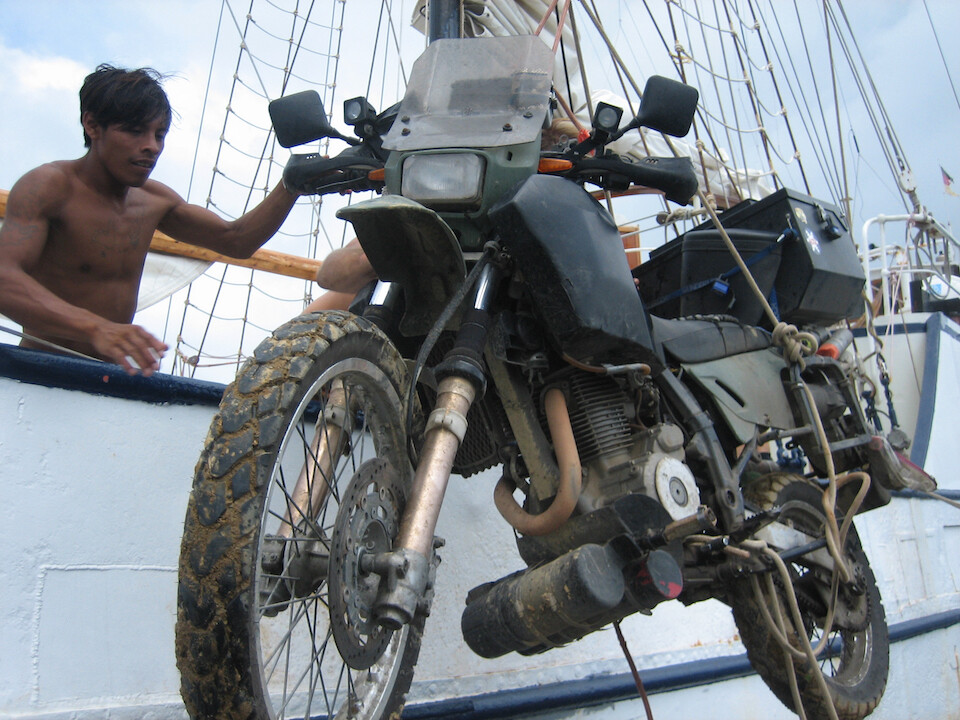
Getting some air.
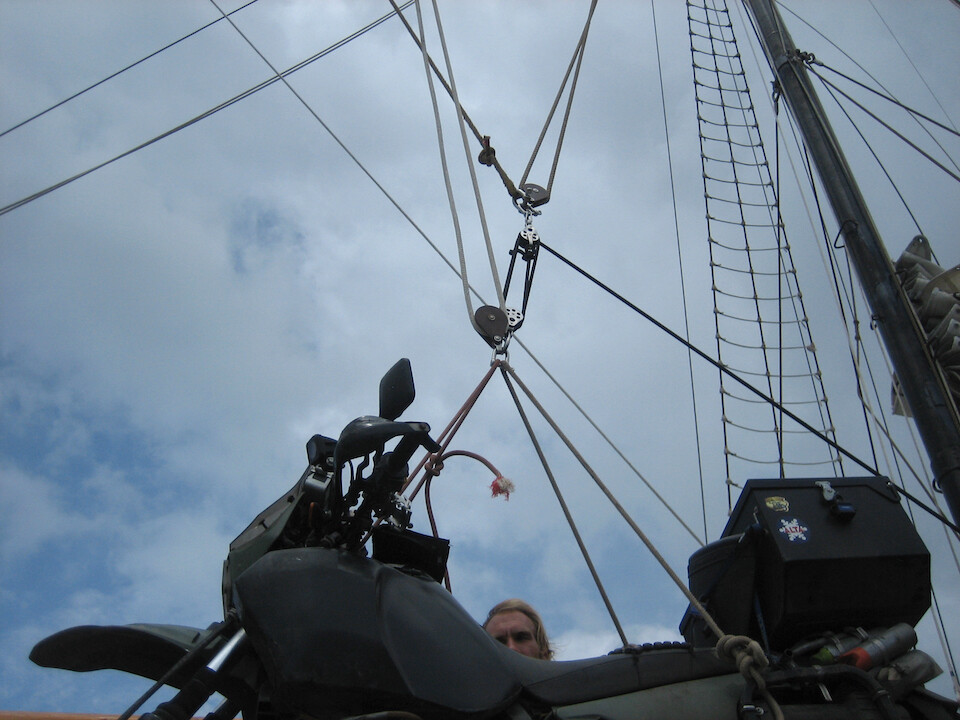
The pulleys used for lifting the bike on board. She was tied around the handle bars and the luggage frame.
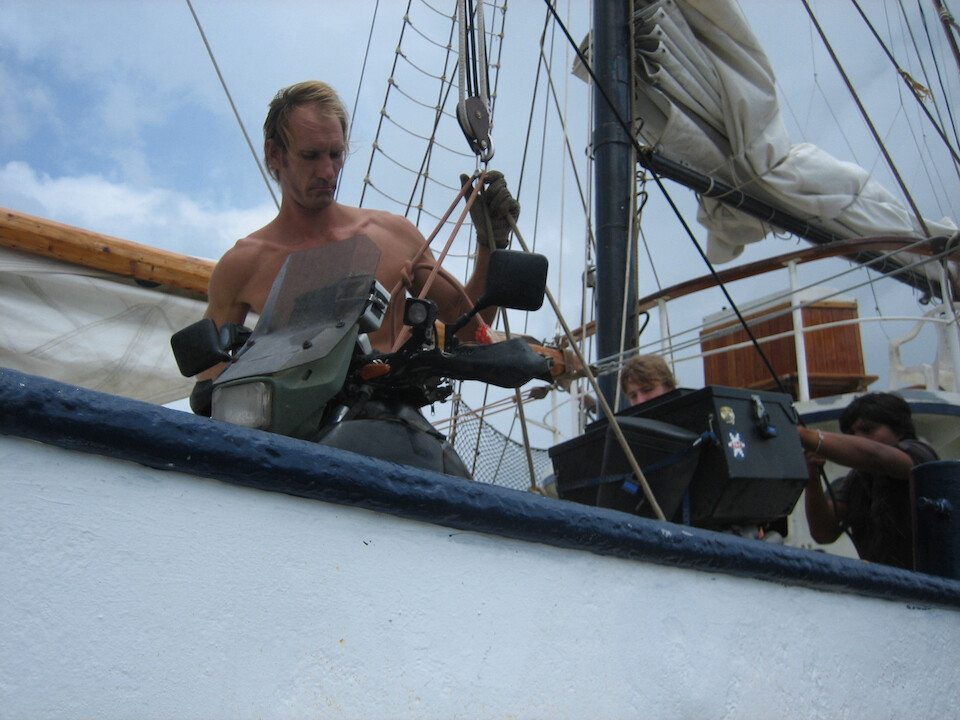
Safely on board the Stahlratte.
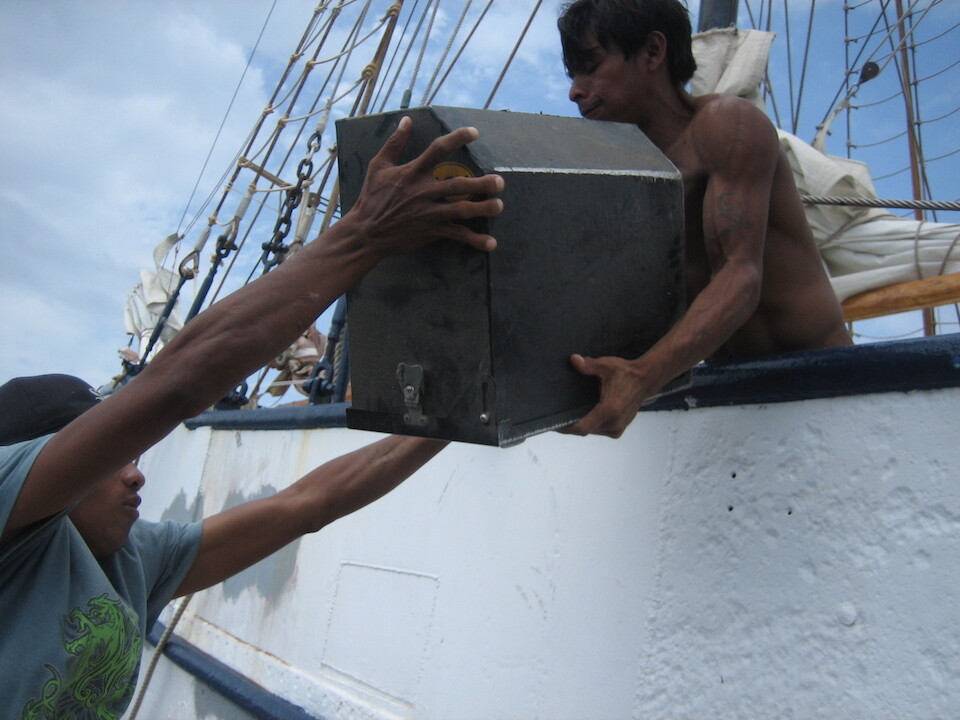
Passing my panniers onto the ship.
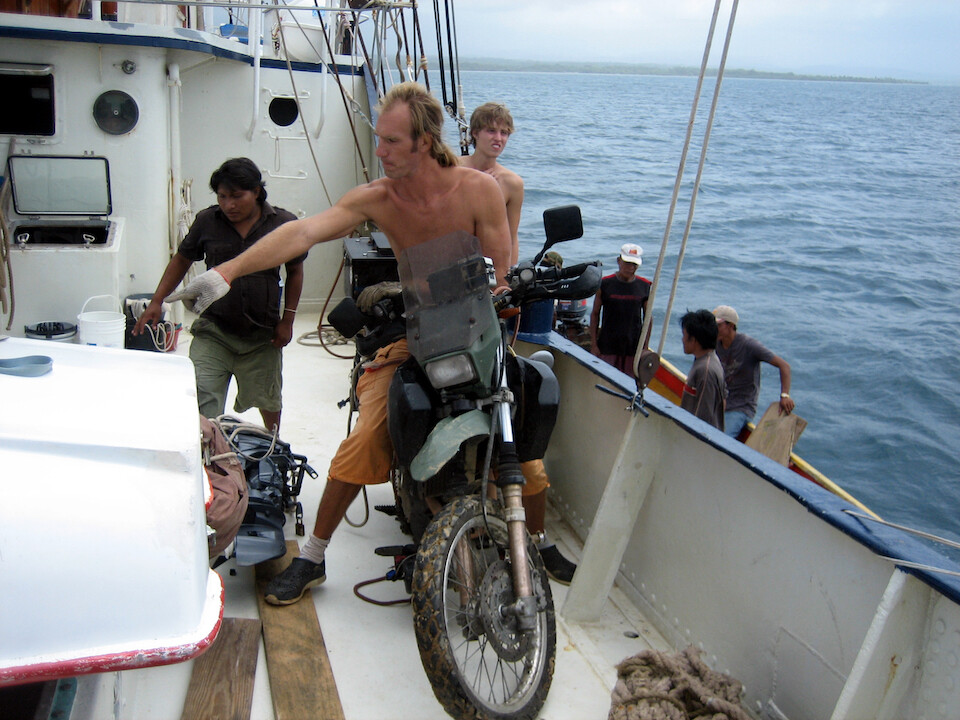
Roli securing the bike to the side of the ship. He's also a rider and has been traveling for many years, setting off from Austria. He custom-built a motorcycle and rode around South America for five years. After Ludwig helped him in getting across, he decided to stay on board and help restore the ship before finding passage onwards to Asia, hoping the Stahlratte heads that way. He's skilled in electronics, among other things and re-did lots of the wiring on the ship.
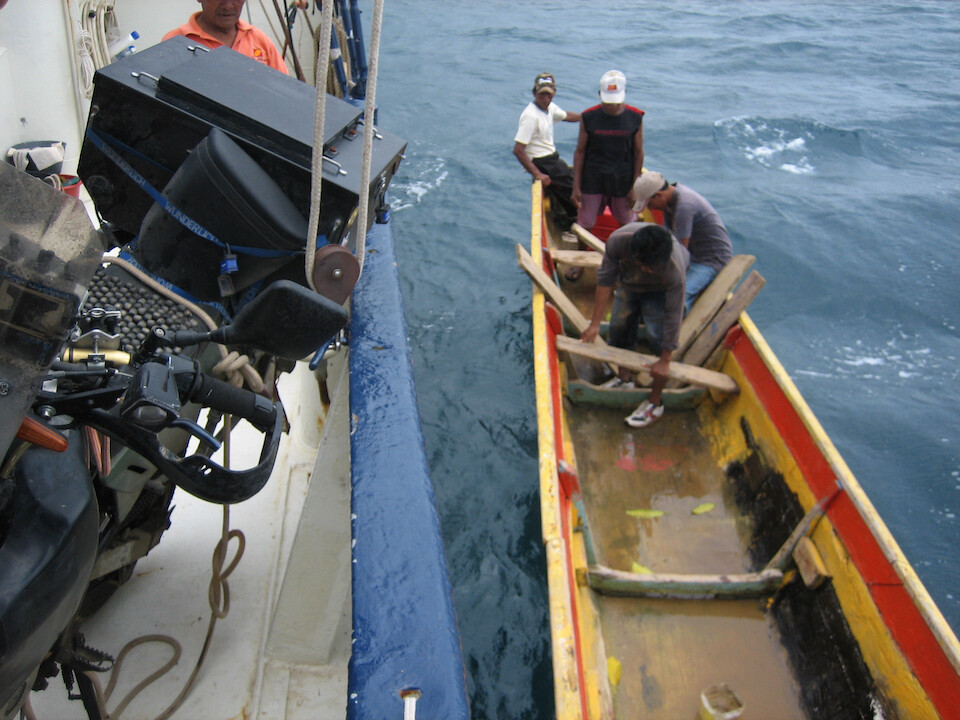
The canoe that we came in. Cost USD 20.
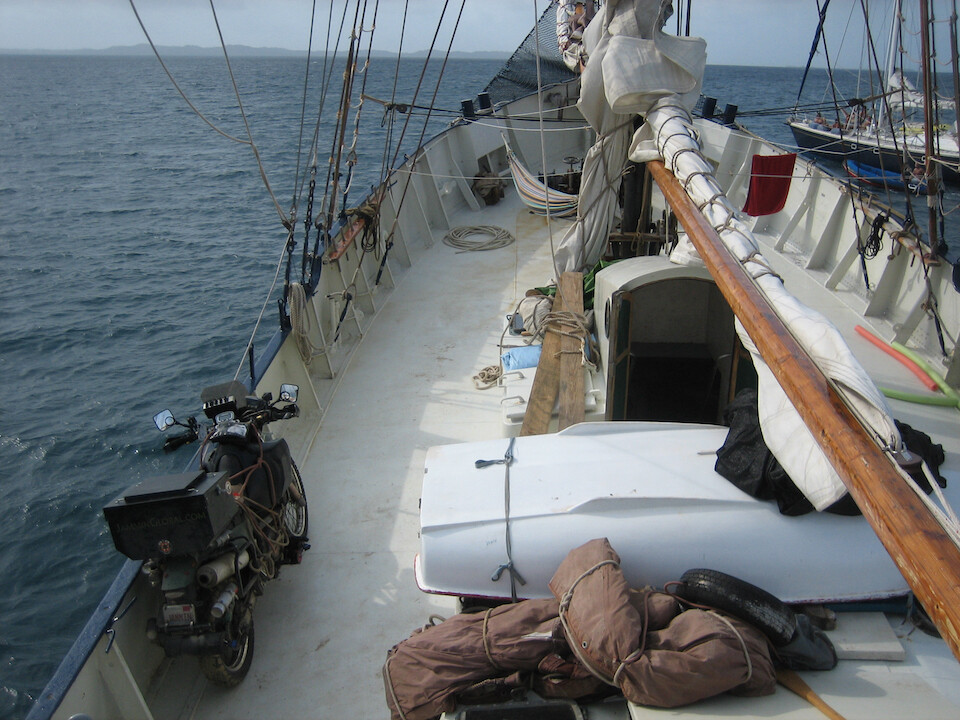
Woohoo, finally on board the Stahlratte! I was impressed at the size of the ship and being greater than 30 meters (100 ft), she can be called a ship instead of a boat.
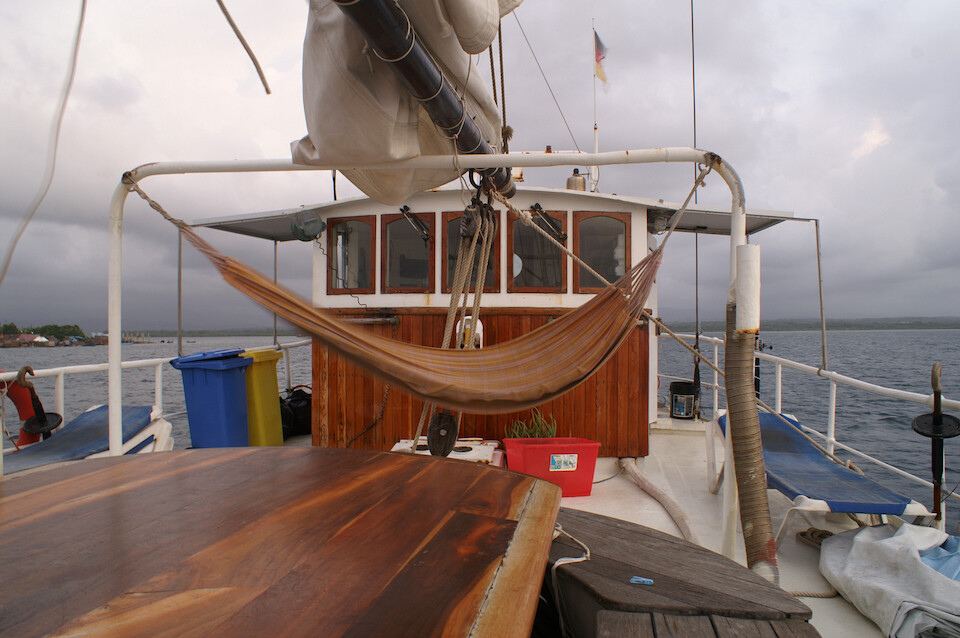
On the upper deck looking back at the captain's bridge.
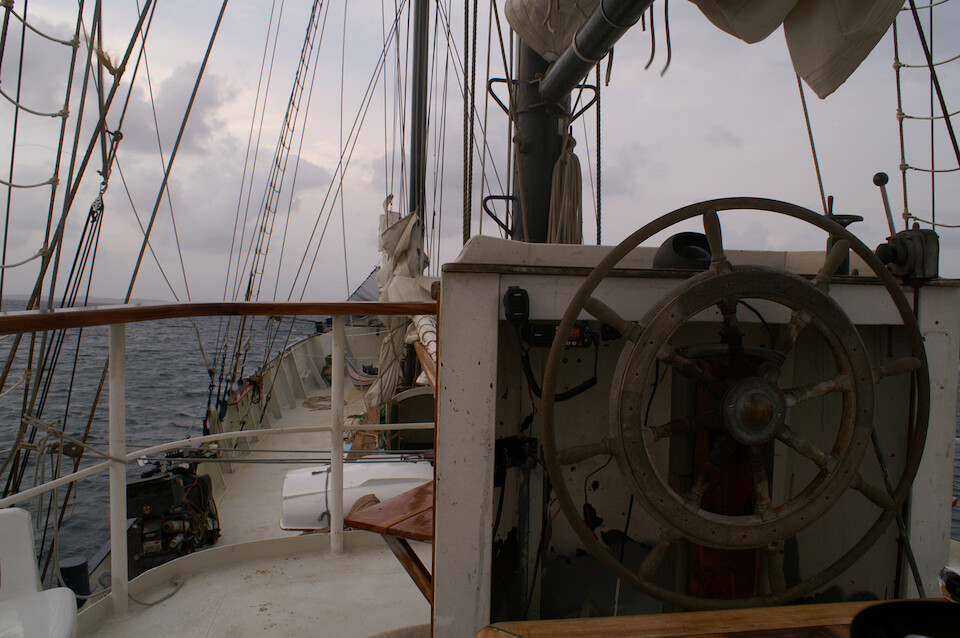
Looking ahead at the ship's wheel, used for manual control. The two levers beside it control the rudder and engine speed. She also had auto-pilot, which was used once we were on open waters.
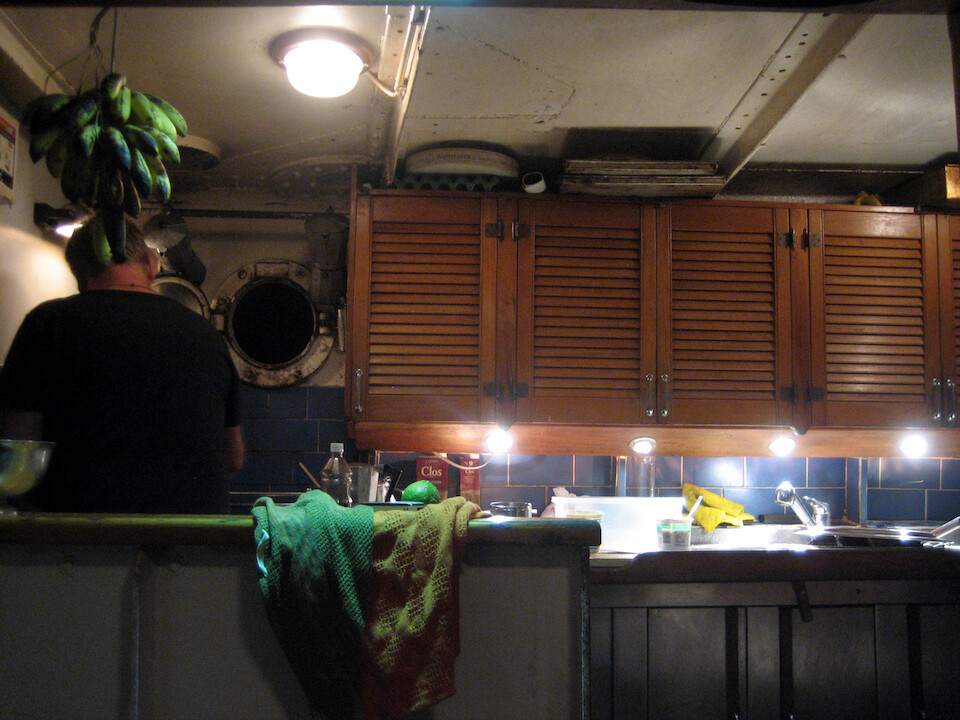
Ludwig preparing dinner in the ship's galley of steak and potatoes. They liked to eat well and both were good cooks.
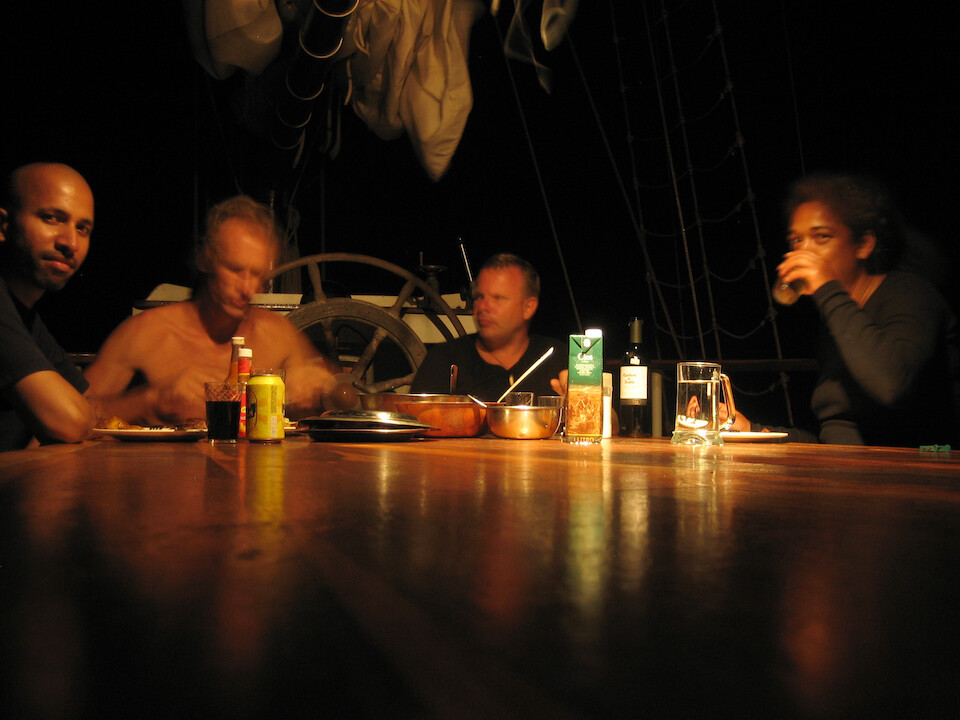
Having dinner at the main dining table on the upper level. The girl on the right is Peggy, a friend of a friend of Ludwig's who spent about two weeks on board, who was leaving the next day for Costa Rica when the main passengers were due to arrive.
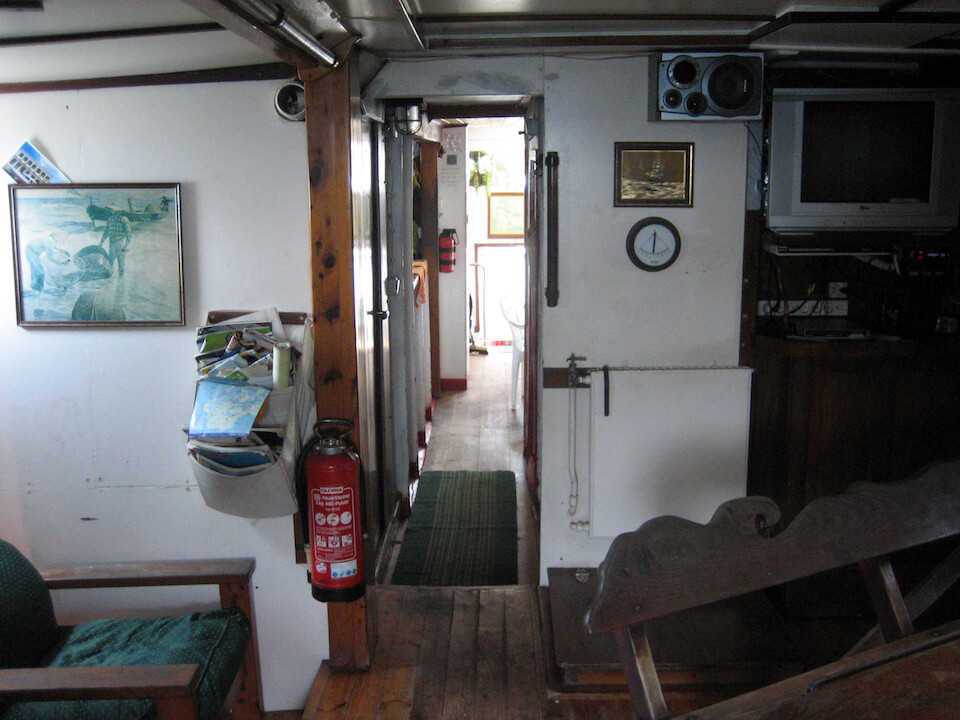
The interior of the Stahlratte - looking towards the front from the library/office into the kitchen. The hatch door behind the bench was the entrance to my cabin.
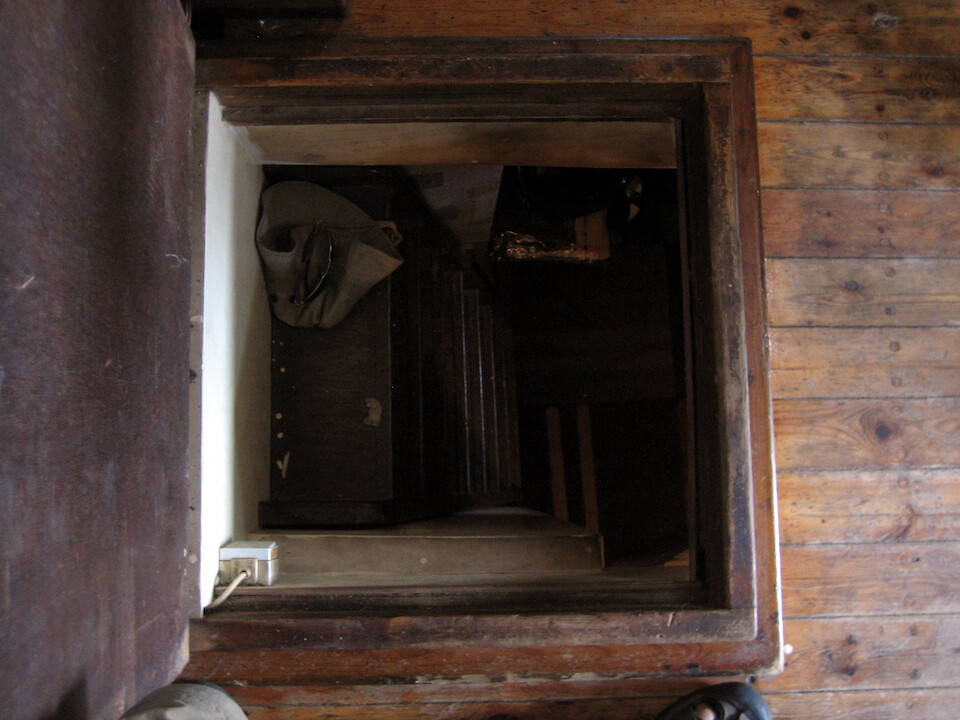
Heading down into my cabin for the trip.
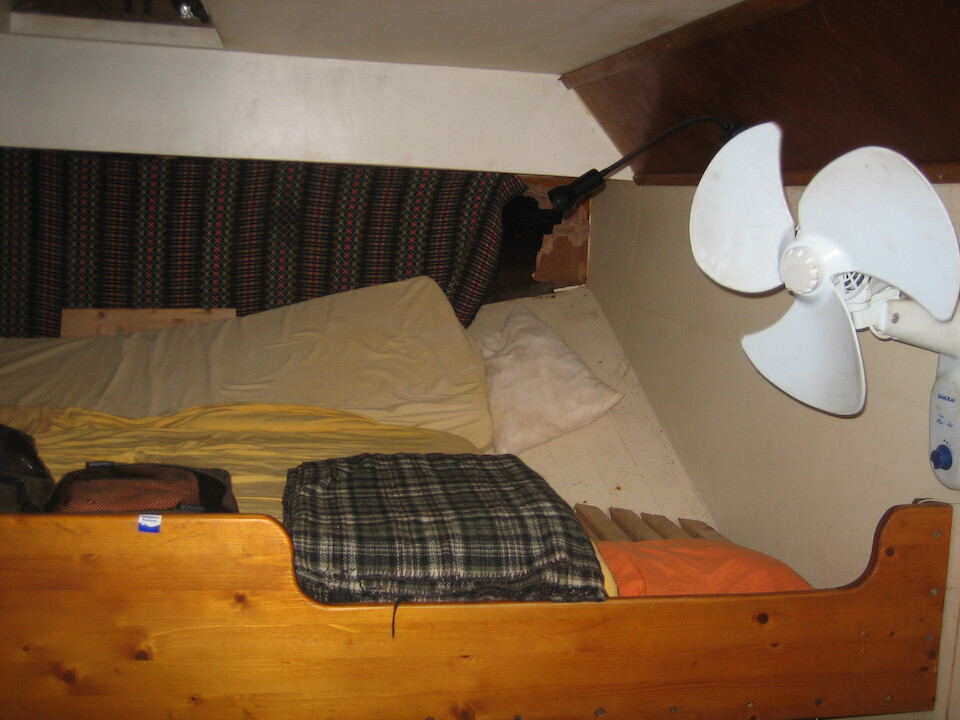
It was a good-sized room at the back of the ship and that fan made it a pleasant journey.
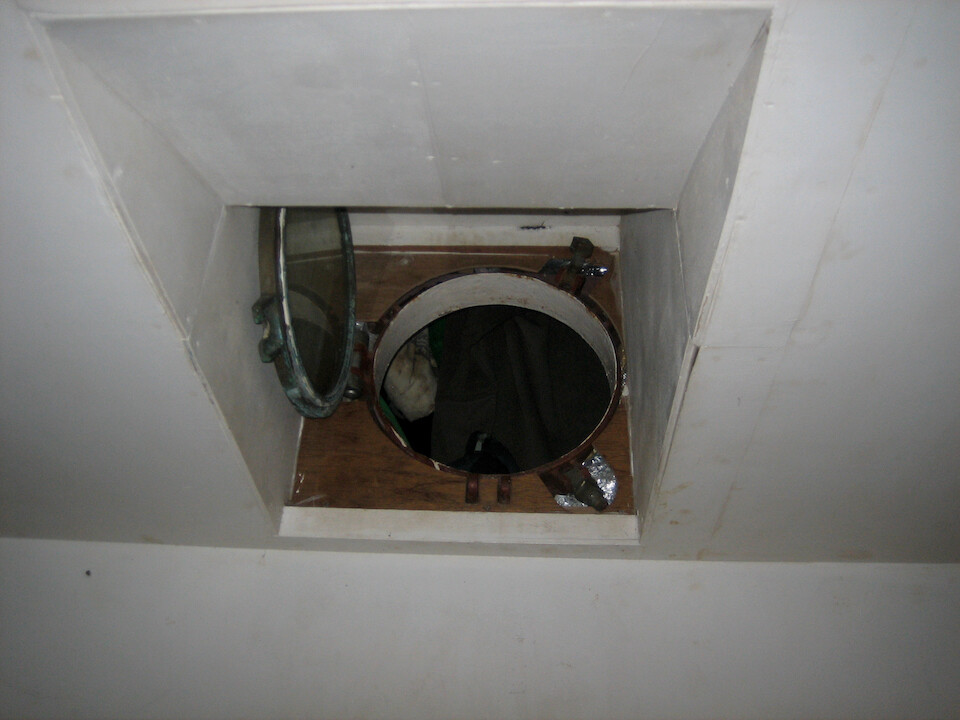
The cabin was right behind the engine room and there were some diesel fumes but at least I had one small window to the outside world.
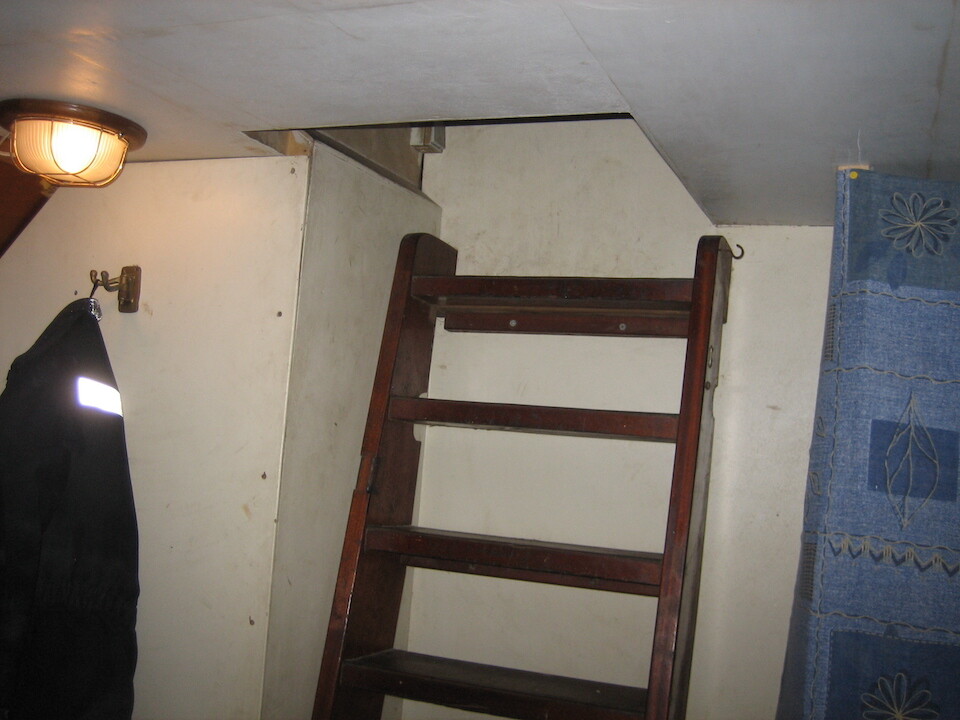
Ladder leading out of my dungeon.
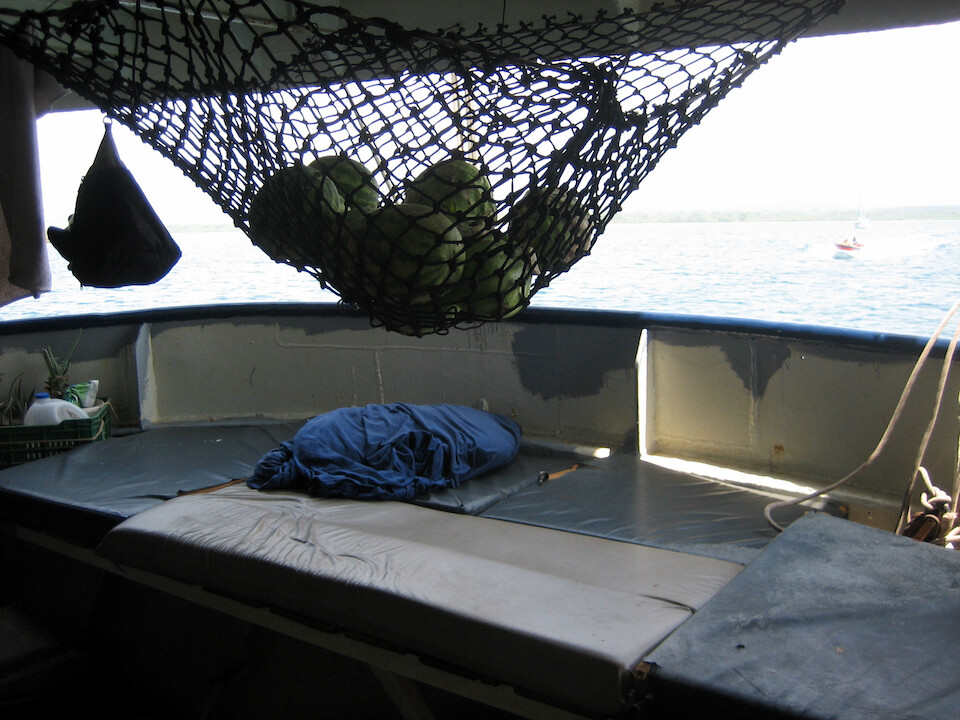
The back of the ship where Roli slept. Watermelons in the net.
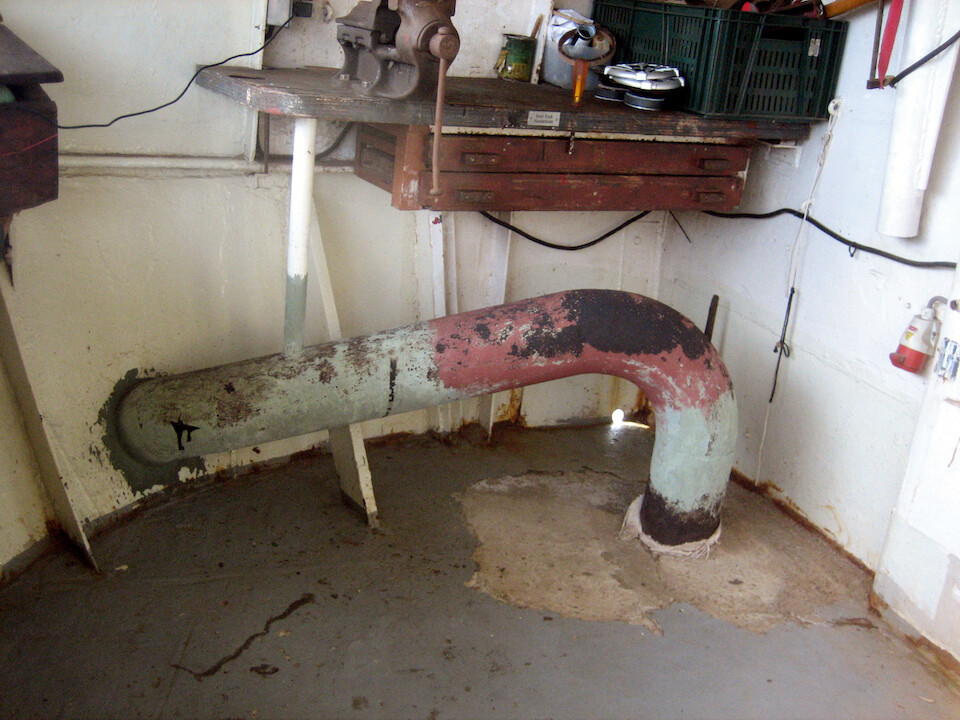
The exhaust pipe from the engine exiting the side of the ship with a workbench above it.
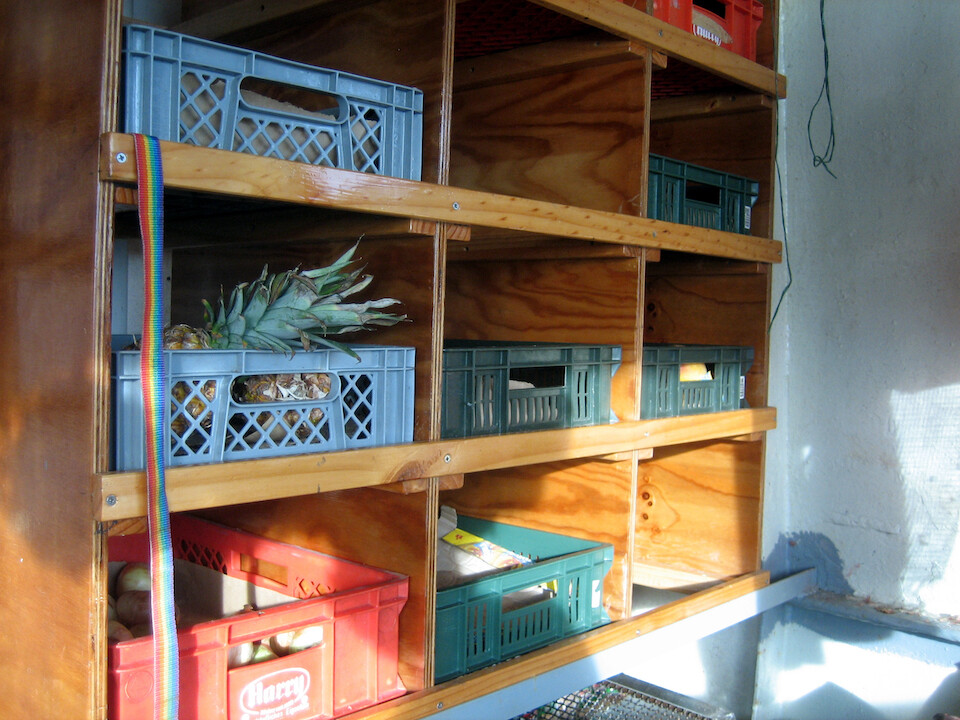
Food stores in the back of lots of fresh vegetables and fruits.
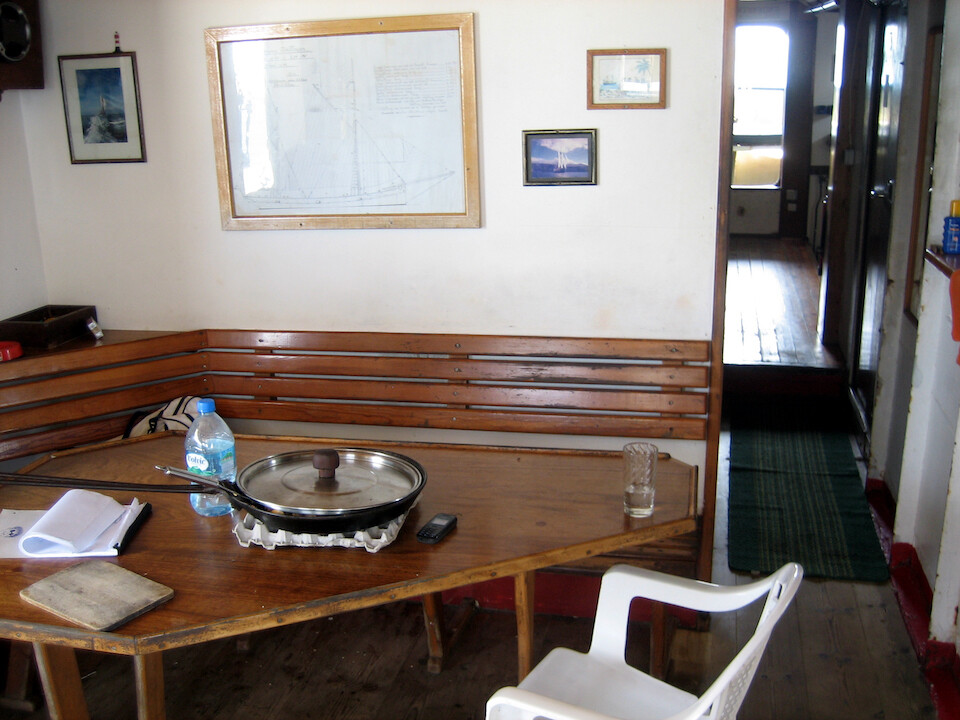
The kitchen preparation area and indoor dining.
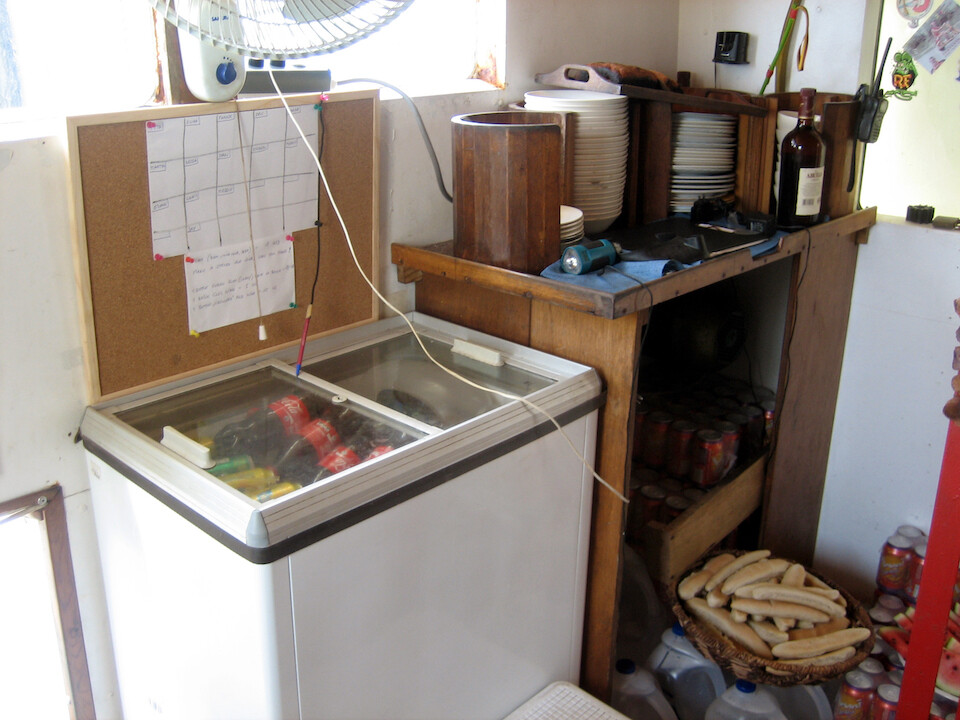
Cooler stacked with sodas and beer (part of my duties were to keep it restocked).
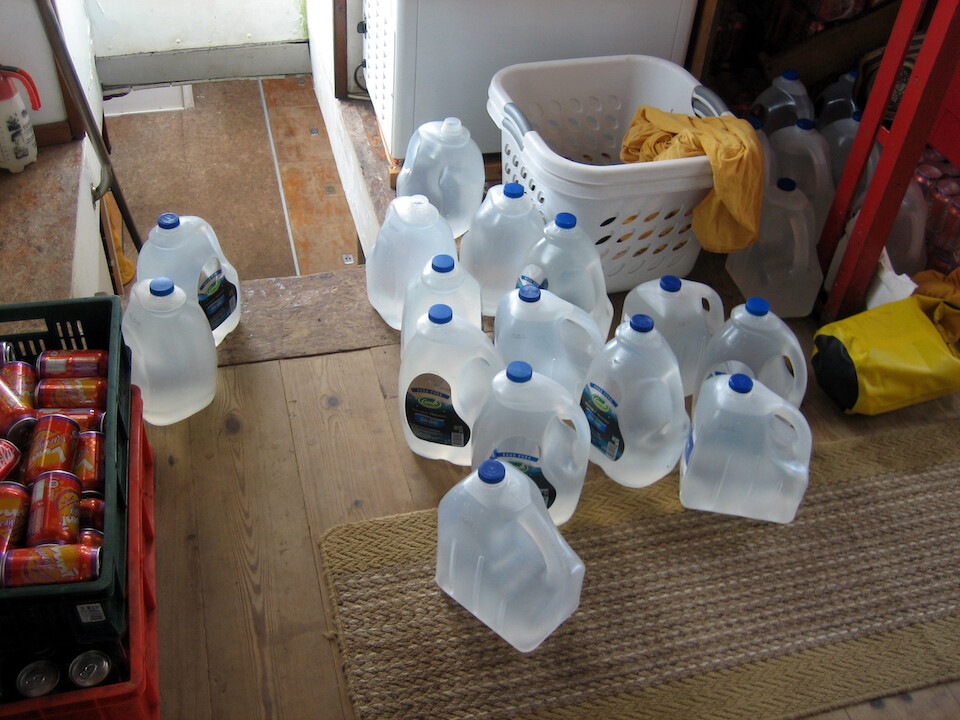
Filling up on fresh water for the trip. There was an on board desalinization unit that could pump out 120 liters of fresh water in an hour.
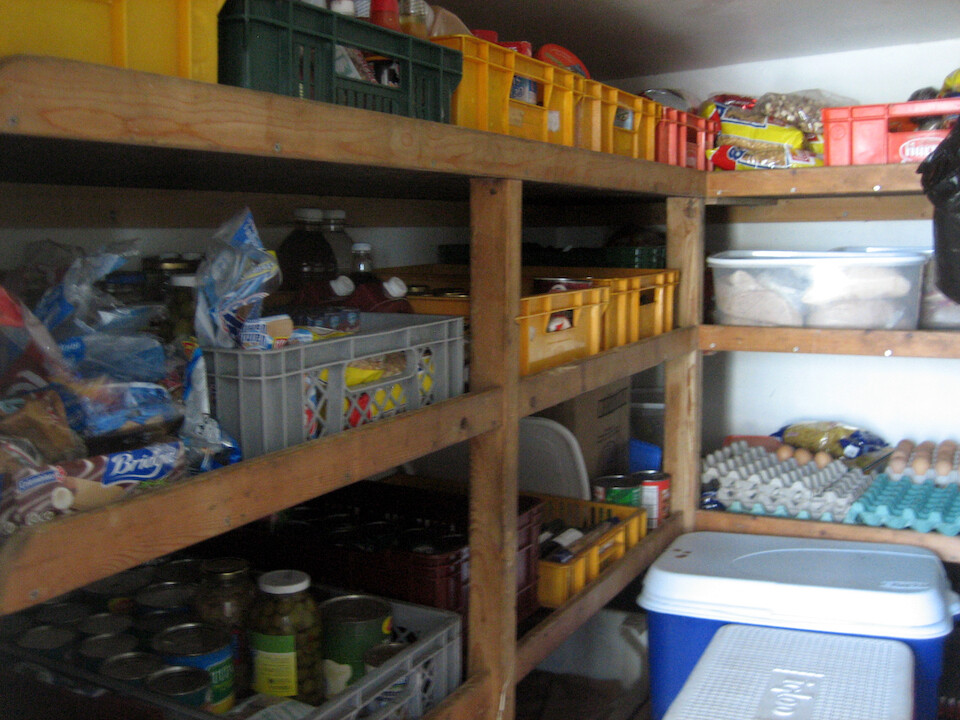
Pantry with lots of food for the trip.
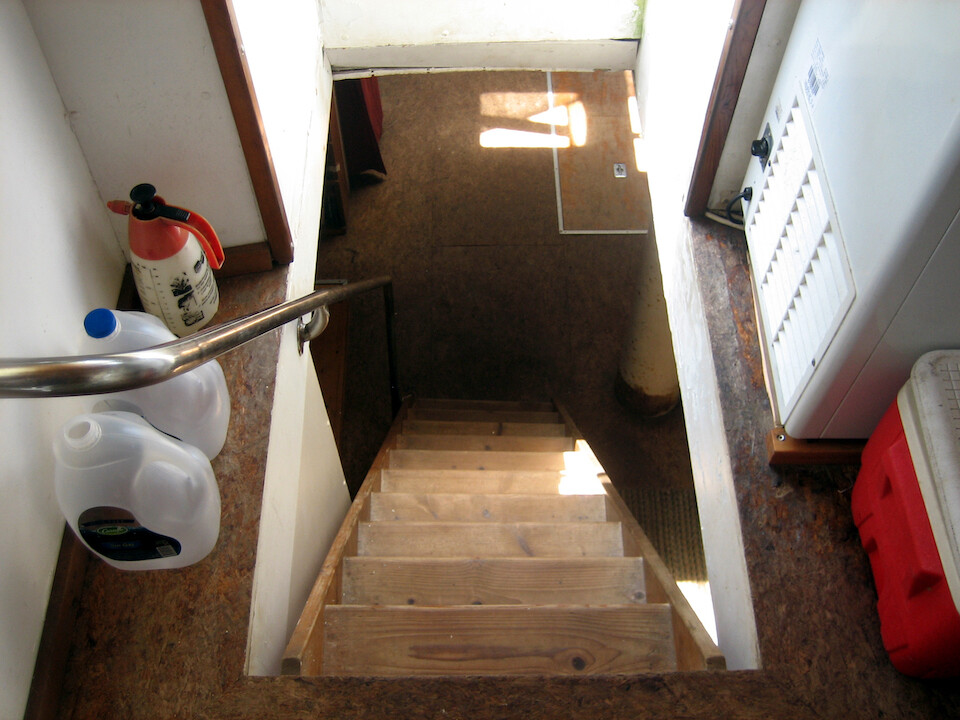
Heading down to the main passenger cabin from the kitchen.
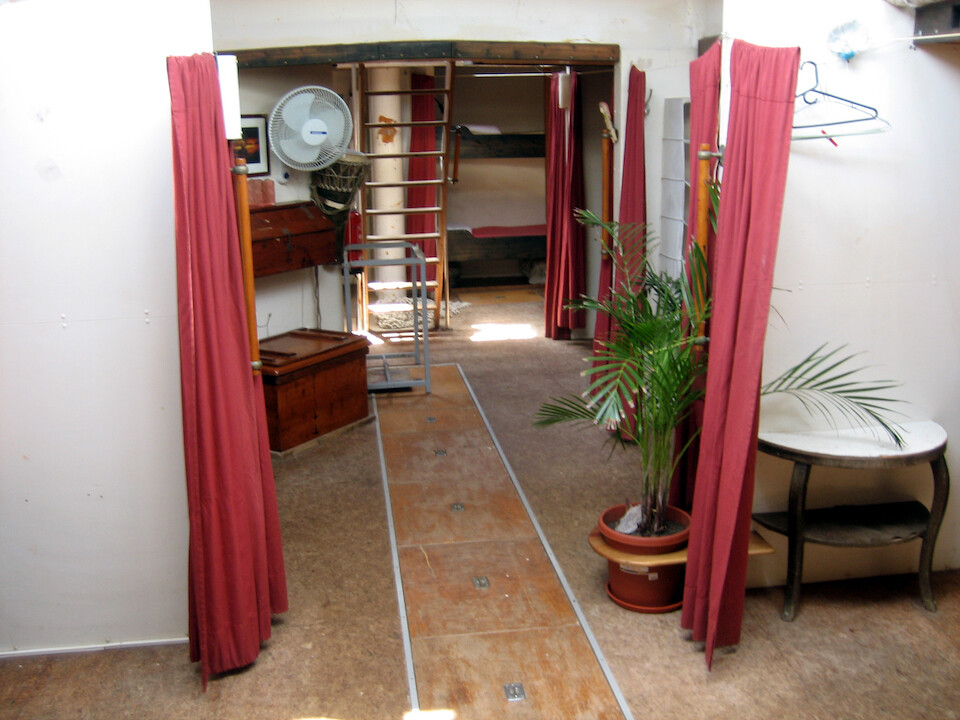
The main passenger cabin, which slept about 20 people.
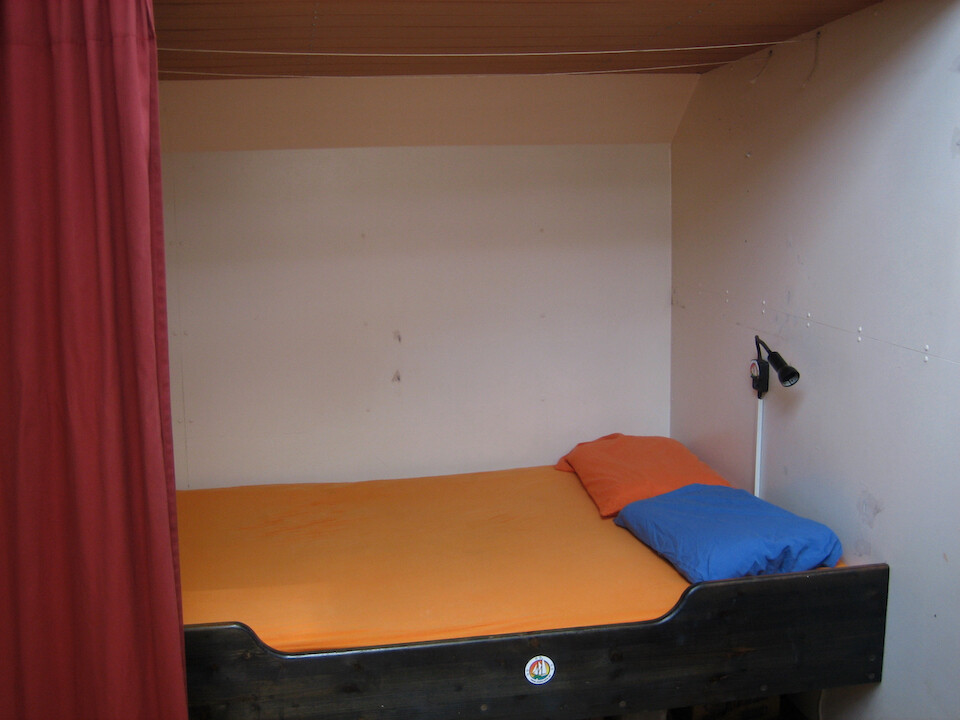
A typical bed for paying passengers. Most of the them complained that it was hot and stuffy, so I was glad to have a fan in my face.
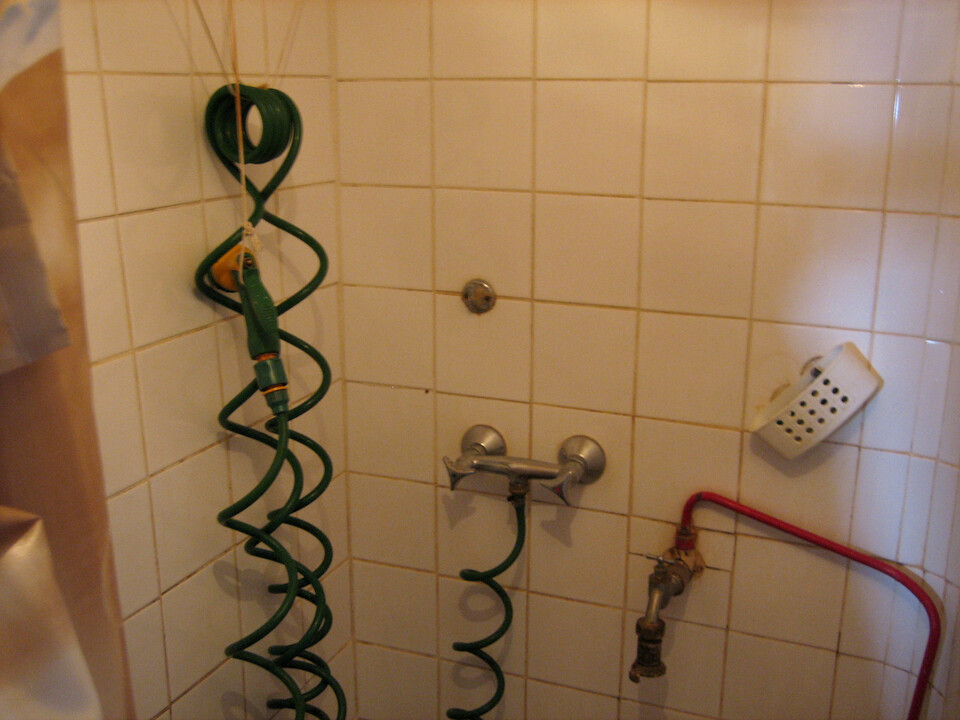
The shower, which proved quite tricky while the boat was swaying wildly.
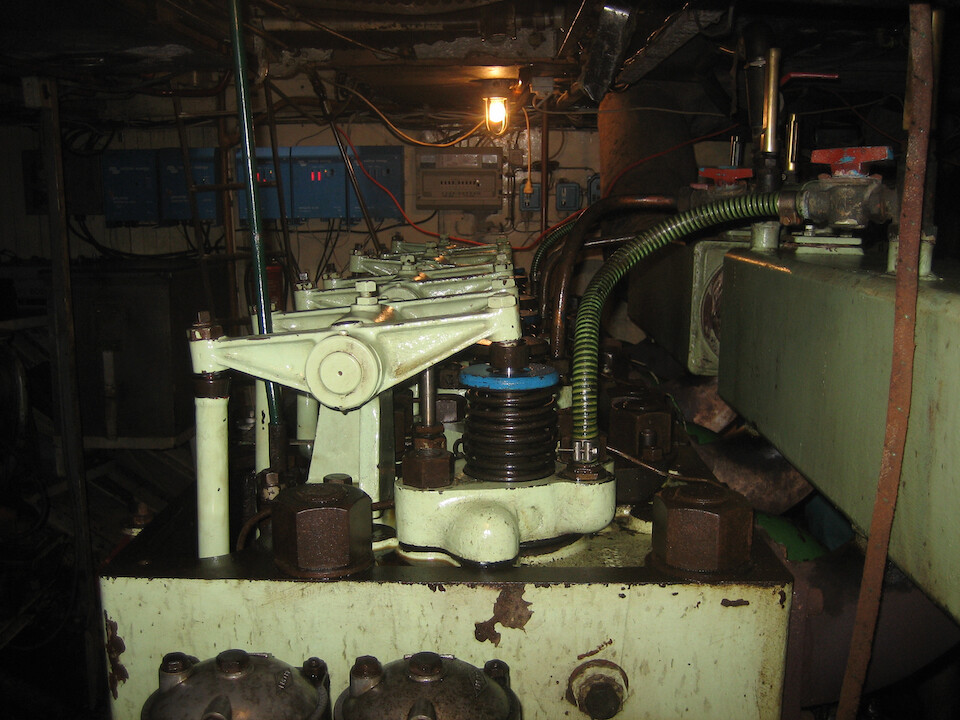
The engine room (under the kitchen). It's a Volund Diesel from Denmark, built in 1954. It's an in-line 4 cylinder and each cylinder has a capacity of 20 liters. It's pumps out about 300 hp at a maximum of 280 RPM. The sound was quite rhythmic, almost like a train. We ran on the engine most of the time, since the winds weren't right for using the sails for propulsion.
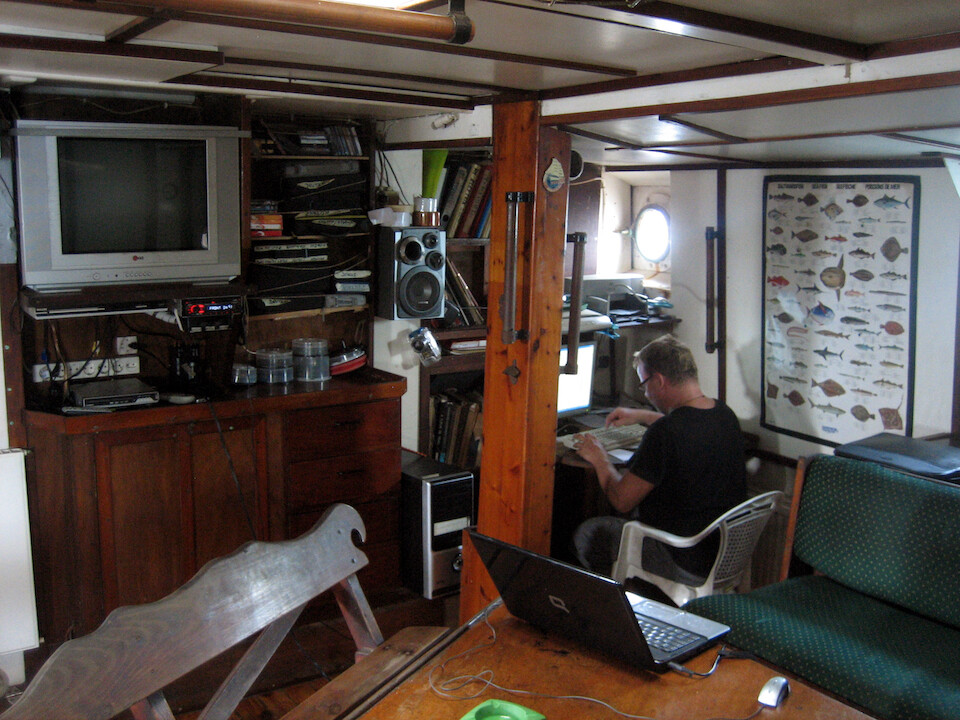
Ludwig at his office entering in all the details of the passengers.
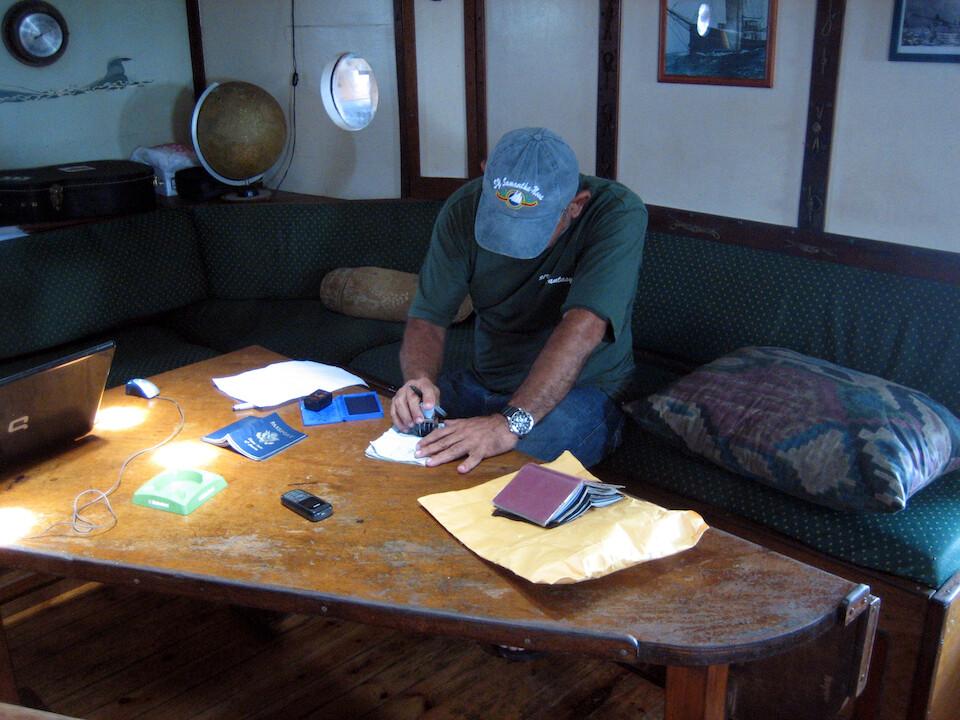
He arranged for an immigrations officer to come on board and process everyone's passport - getting an exit stamp out of Panama.

Nearby Kuna islands. The Kuna Indians were pushed out to the San Blas Archipelago as the Spanish took over the mainland and they've been here for about 500 years making their life on the open waters.
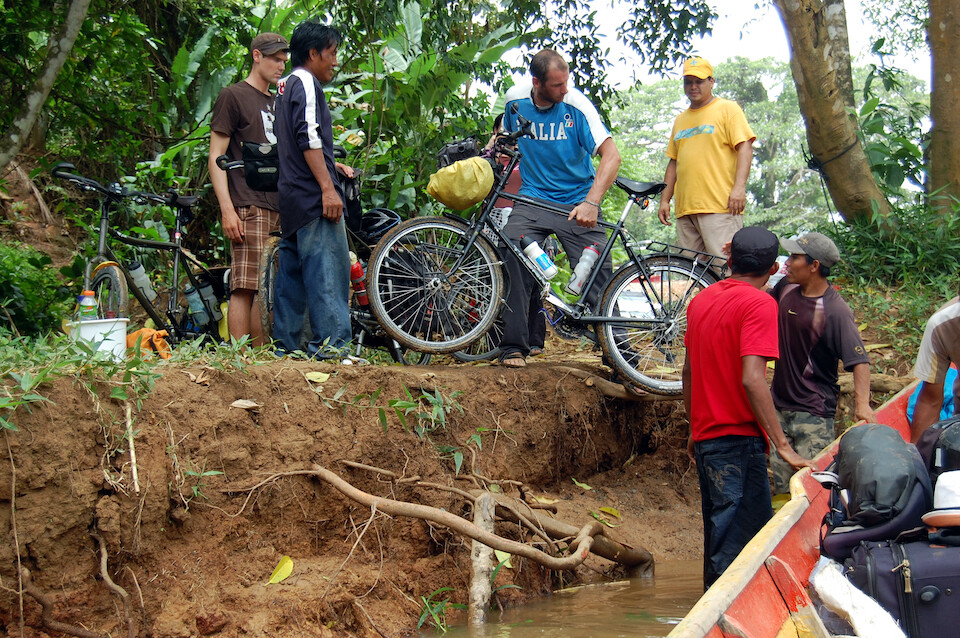
The passenger group loading onto the canoes at the river. It was two cyclists doing Alaska to Tierra del Fuego who had their friends fly down for the sailing trip. They met two other Irish cyclists and invited them to join them across the waters.
Next: Sailing on the Stahlratte, Part 2: Cruising The Caribbean
Previous: Panama, Part 2: The Canal & Darien